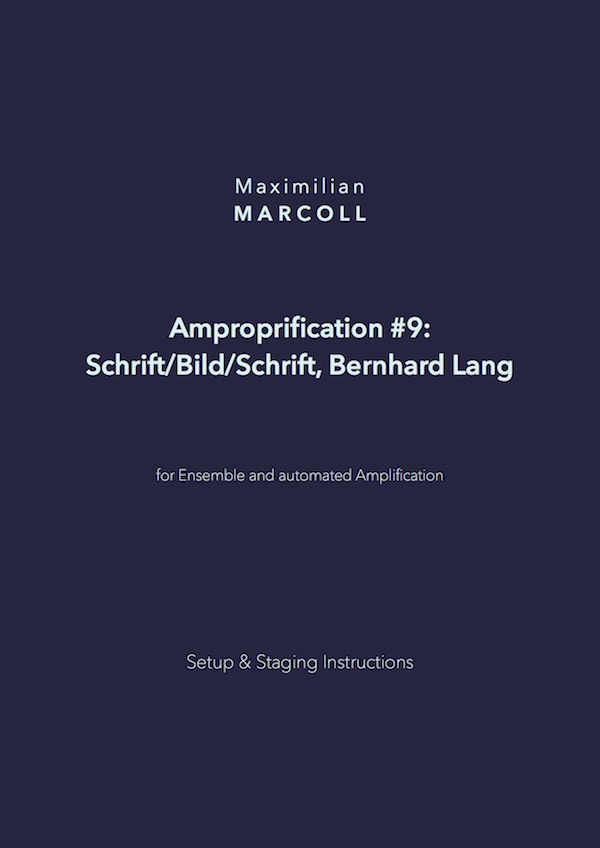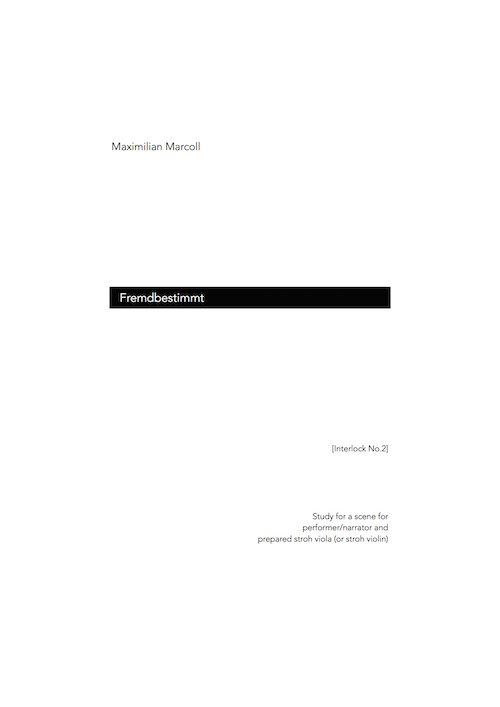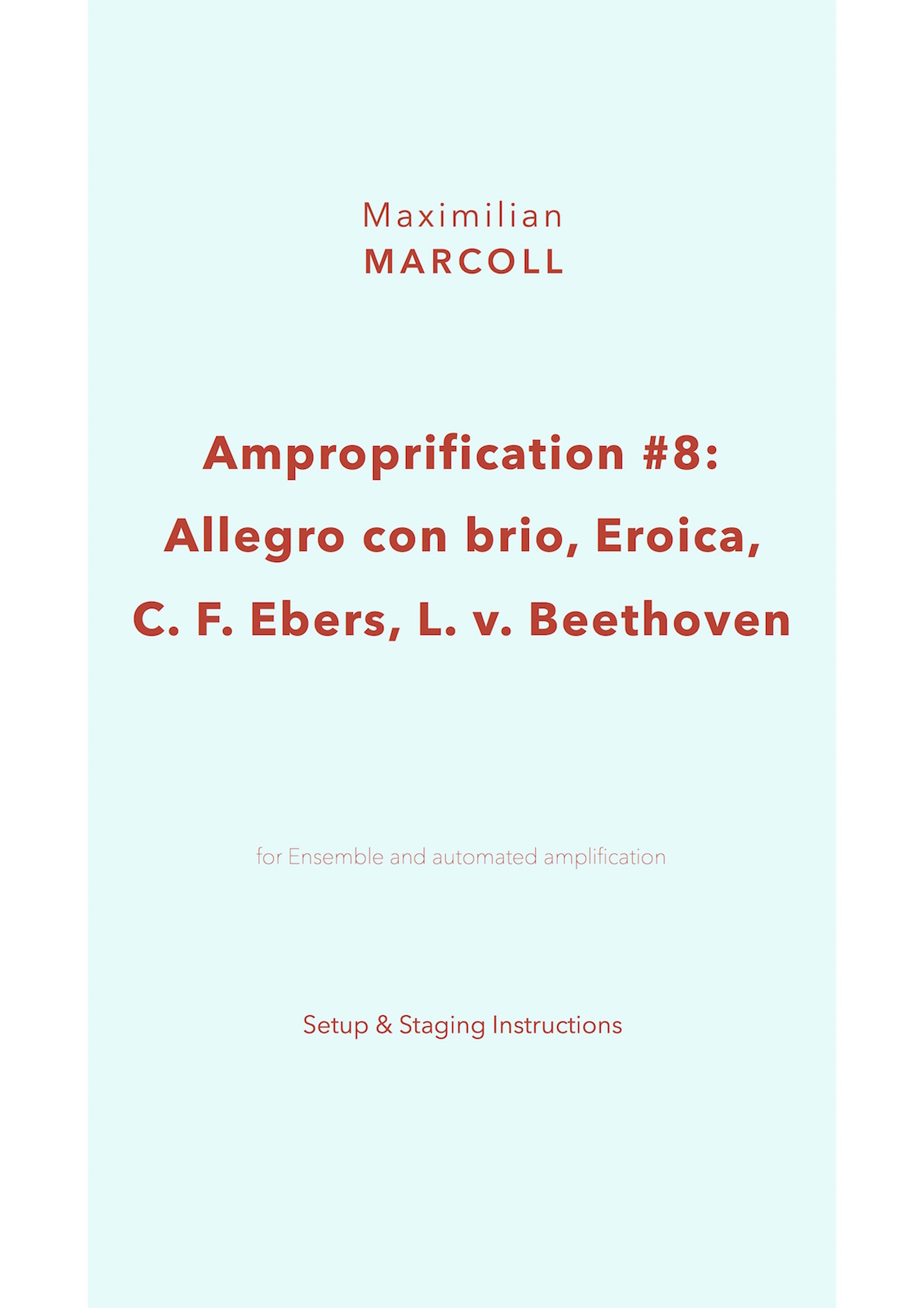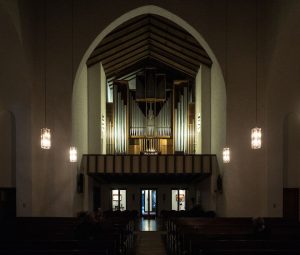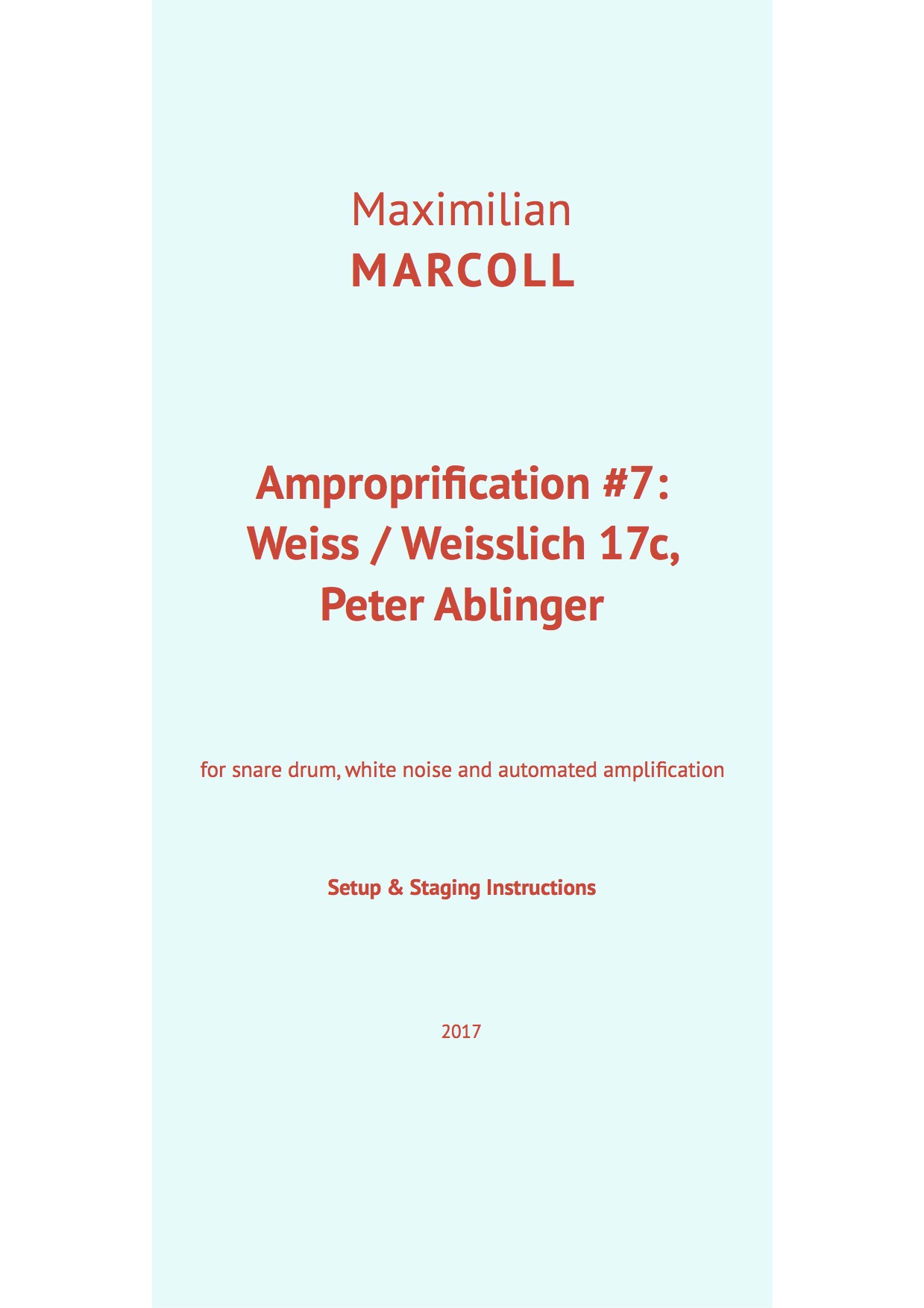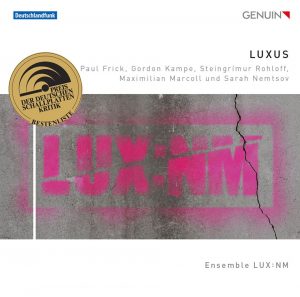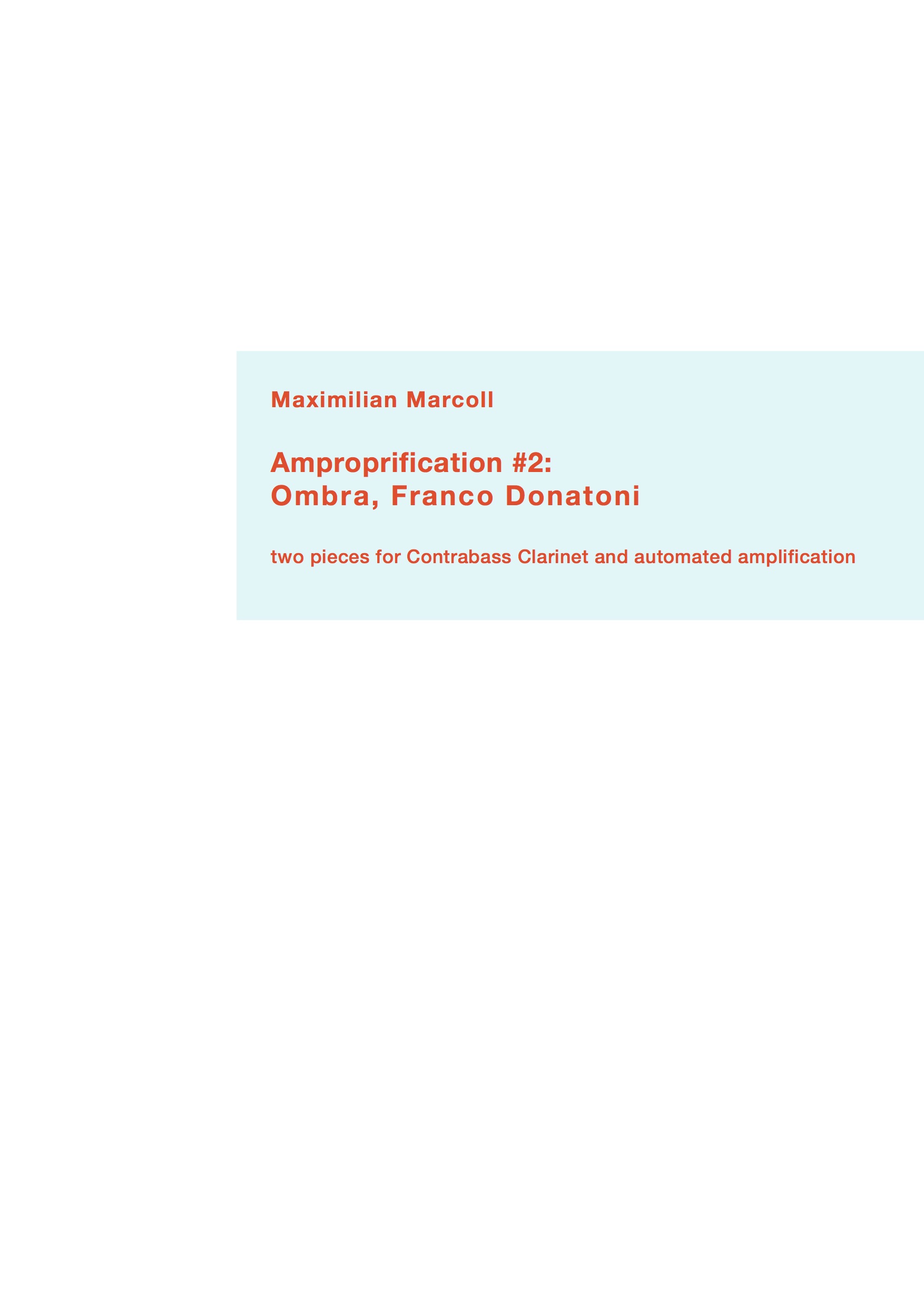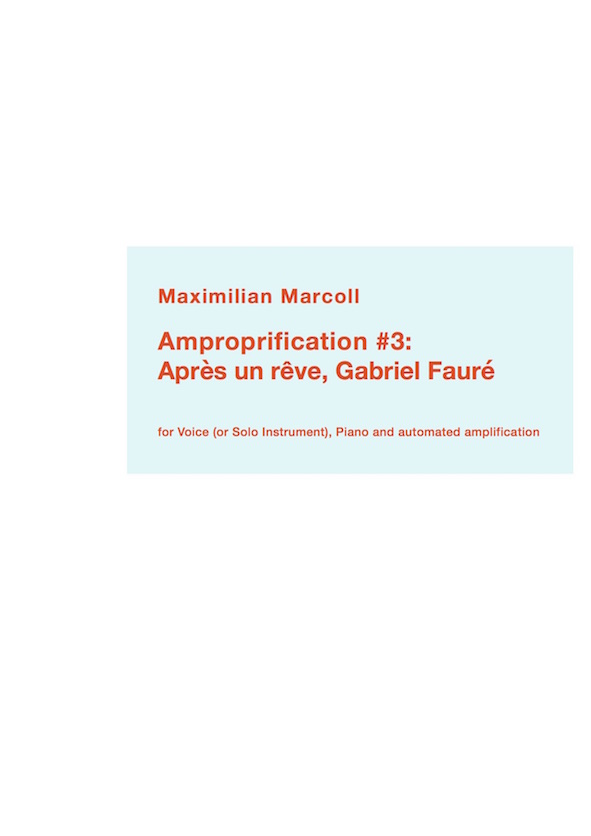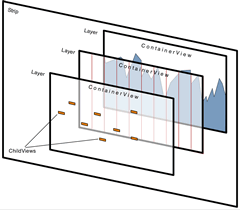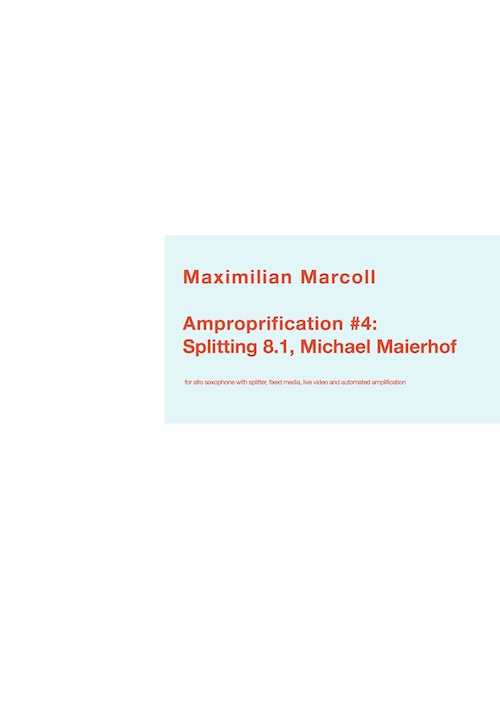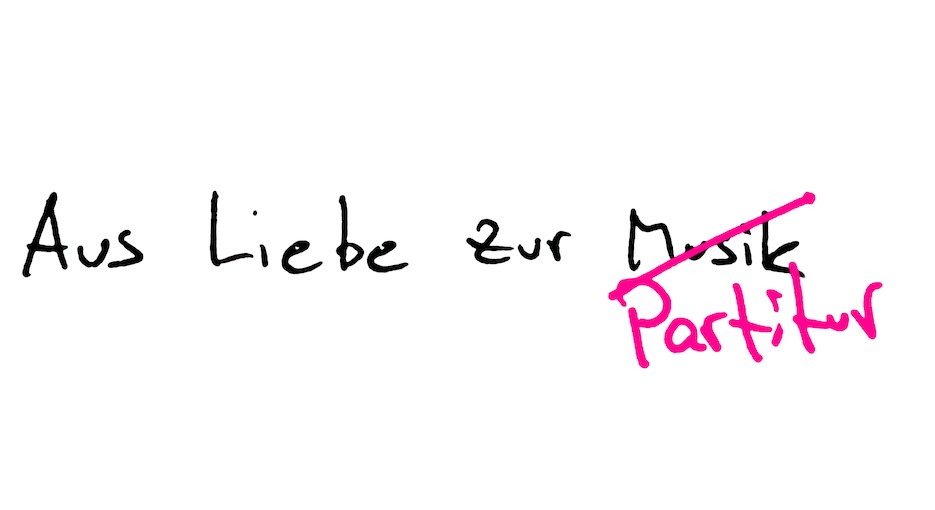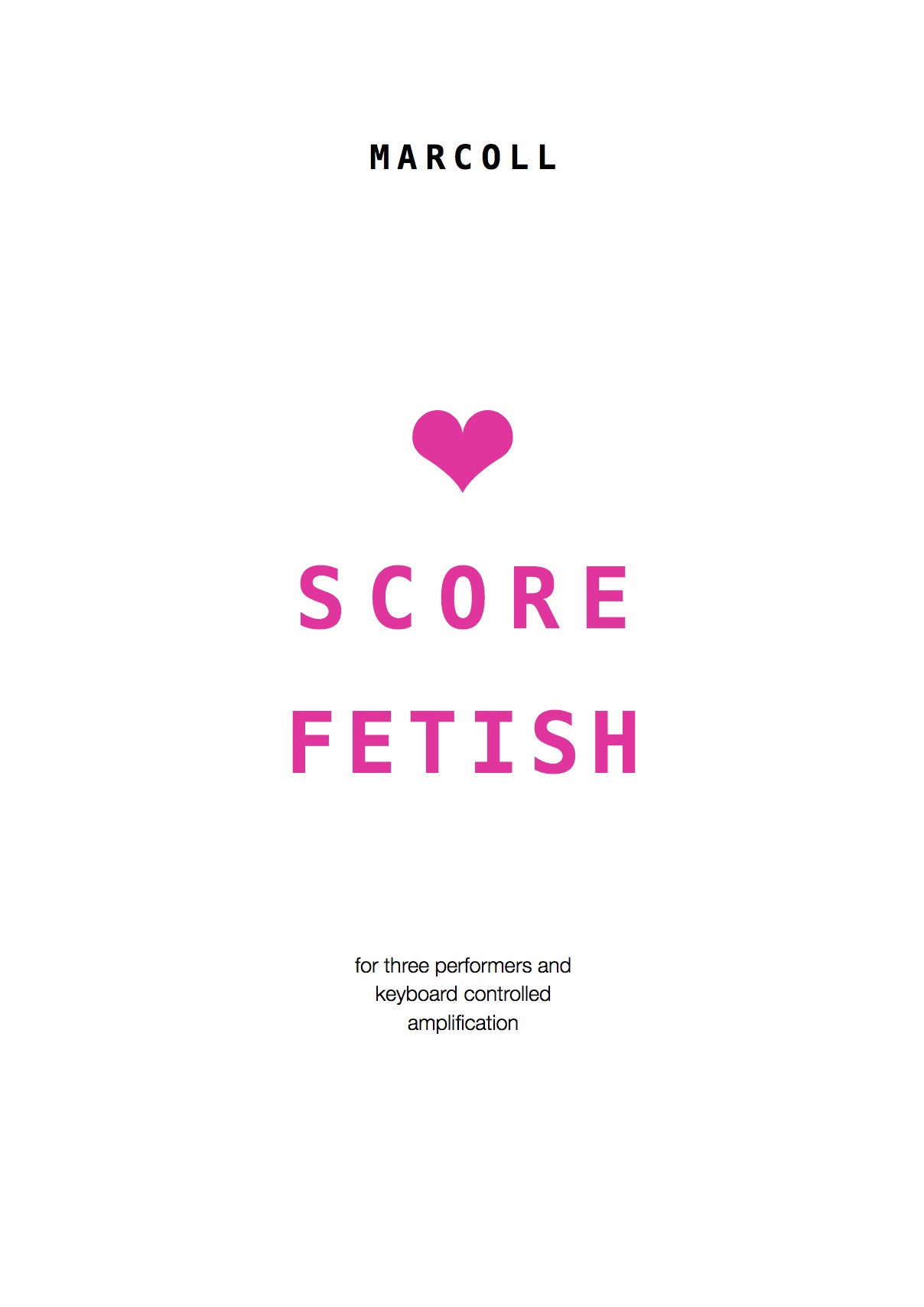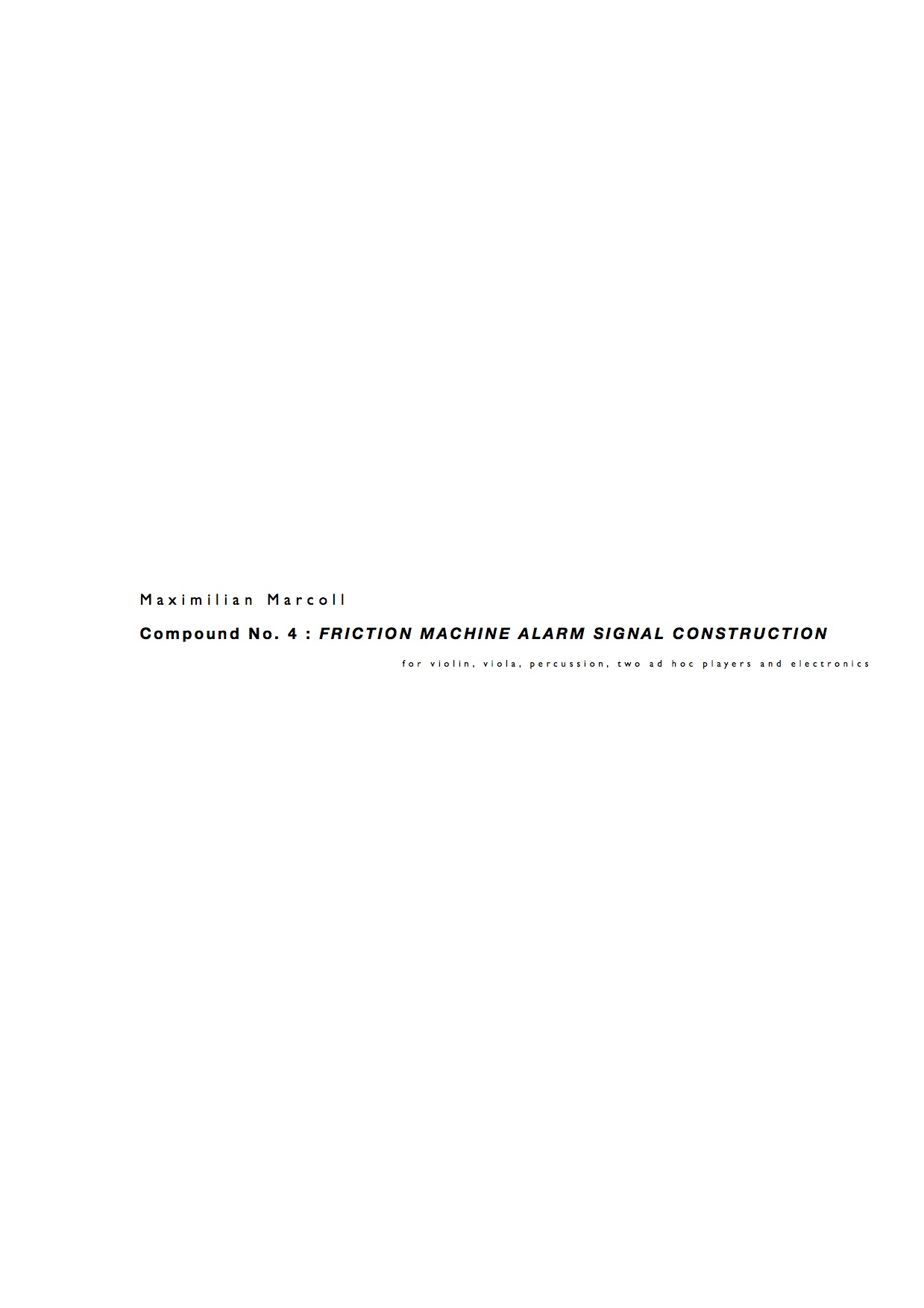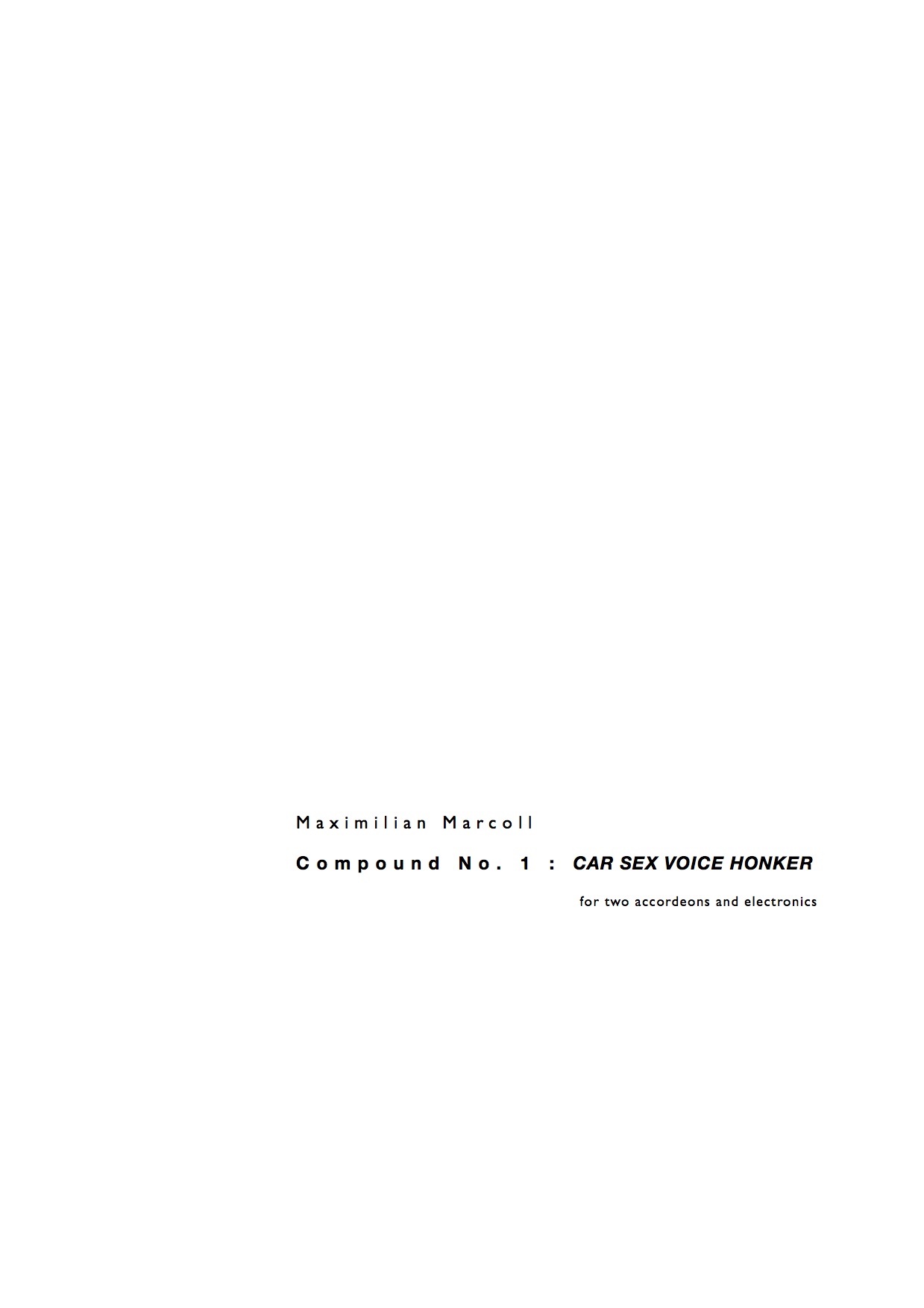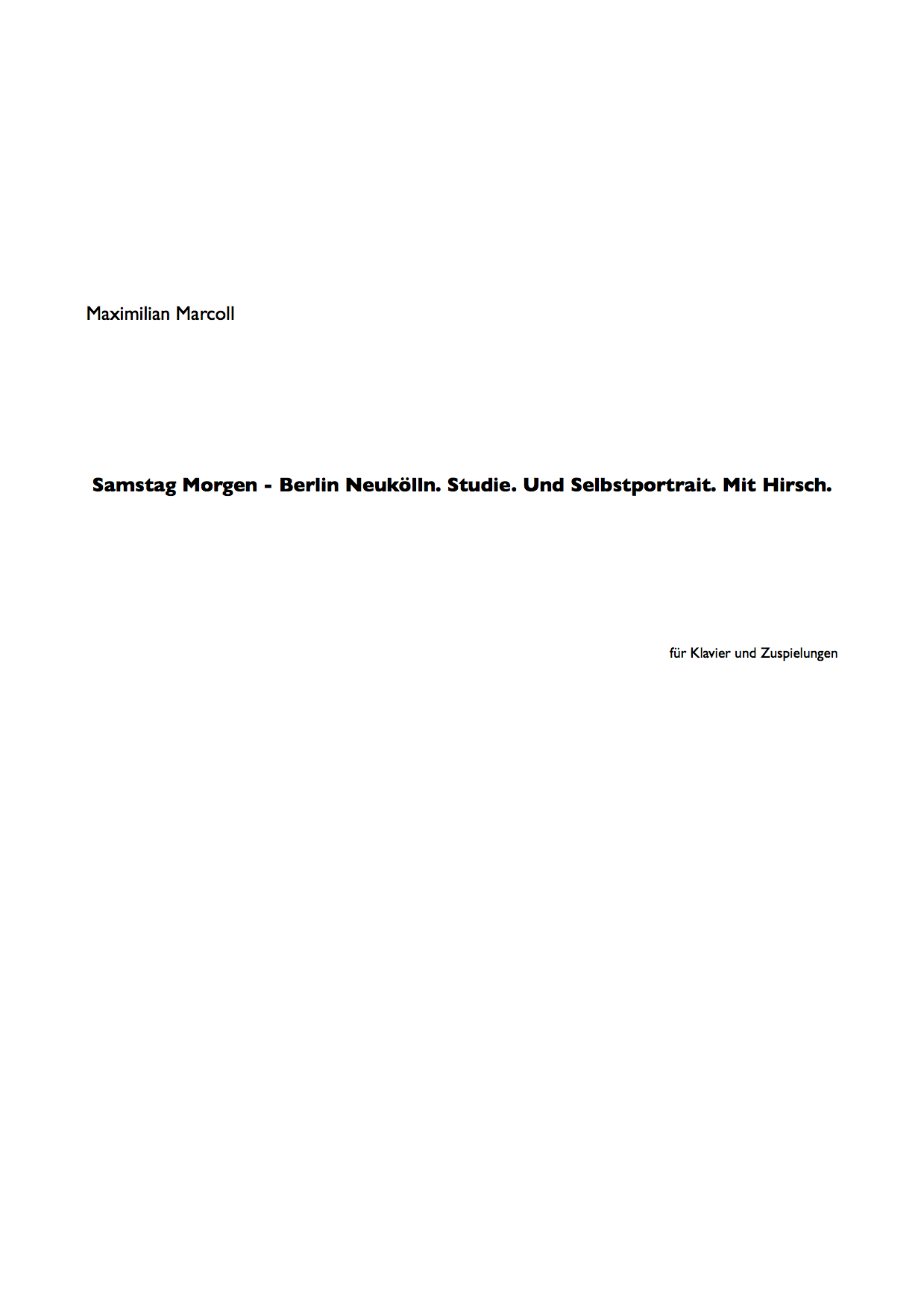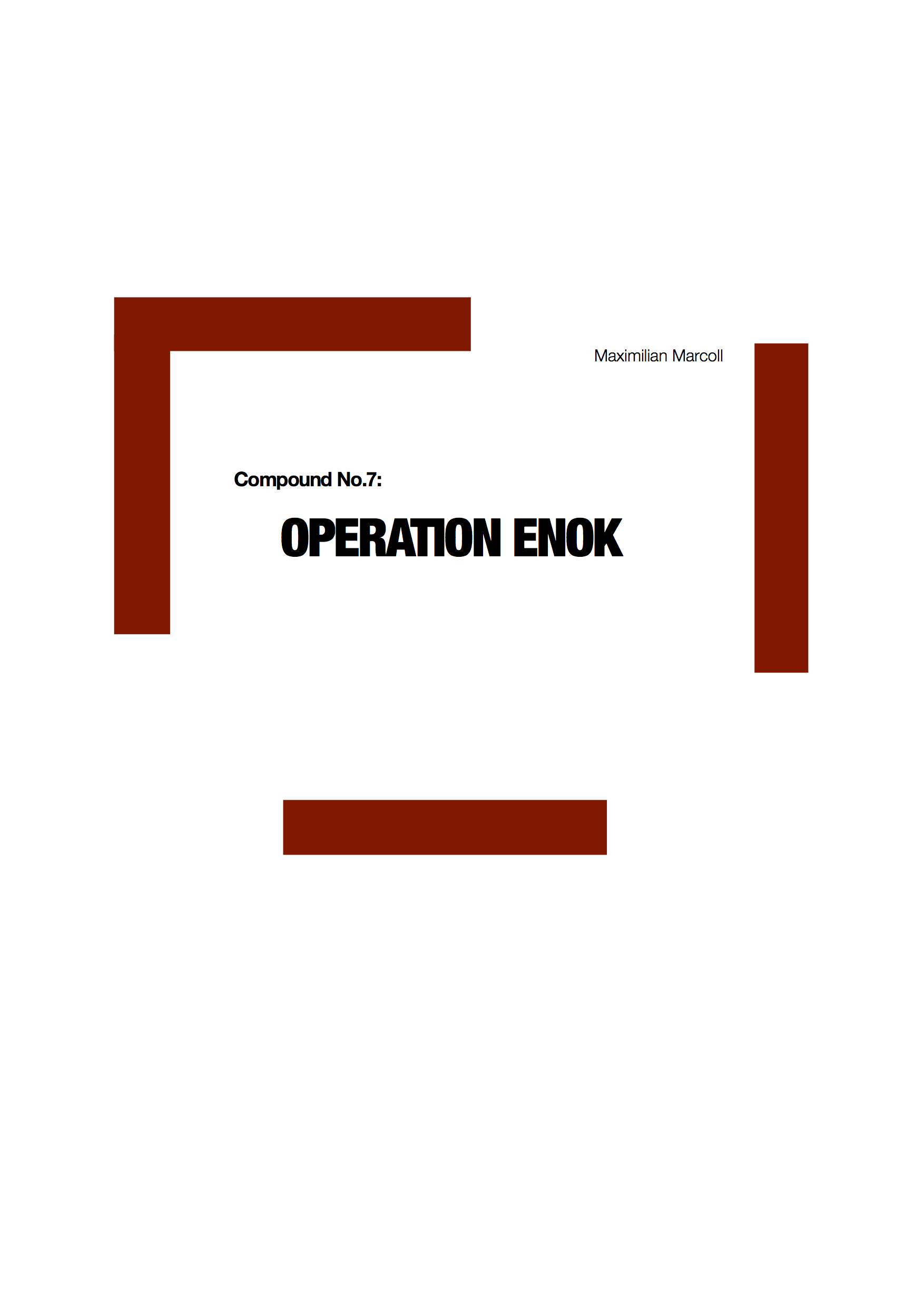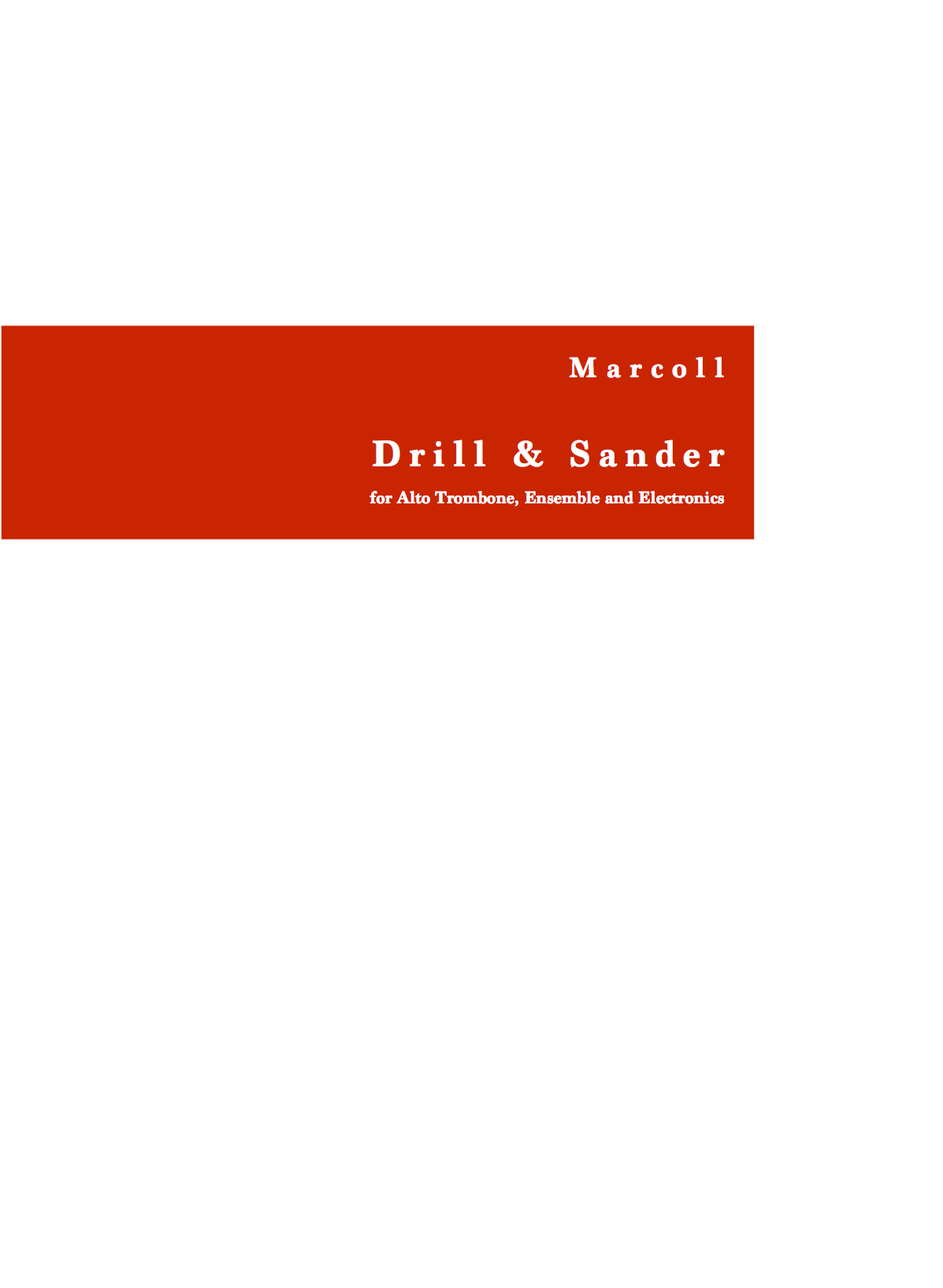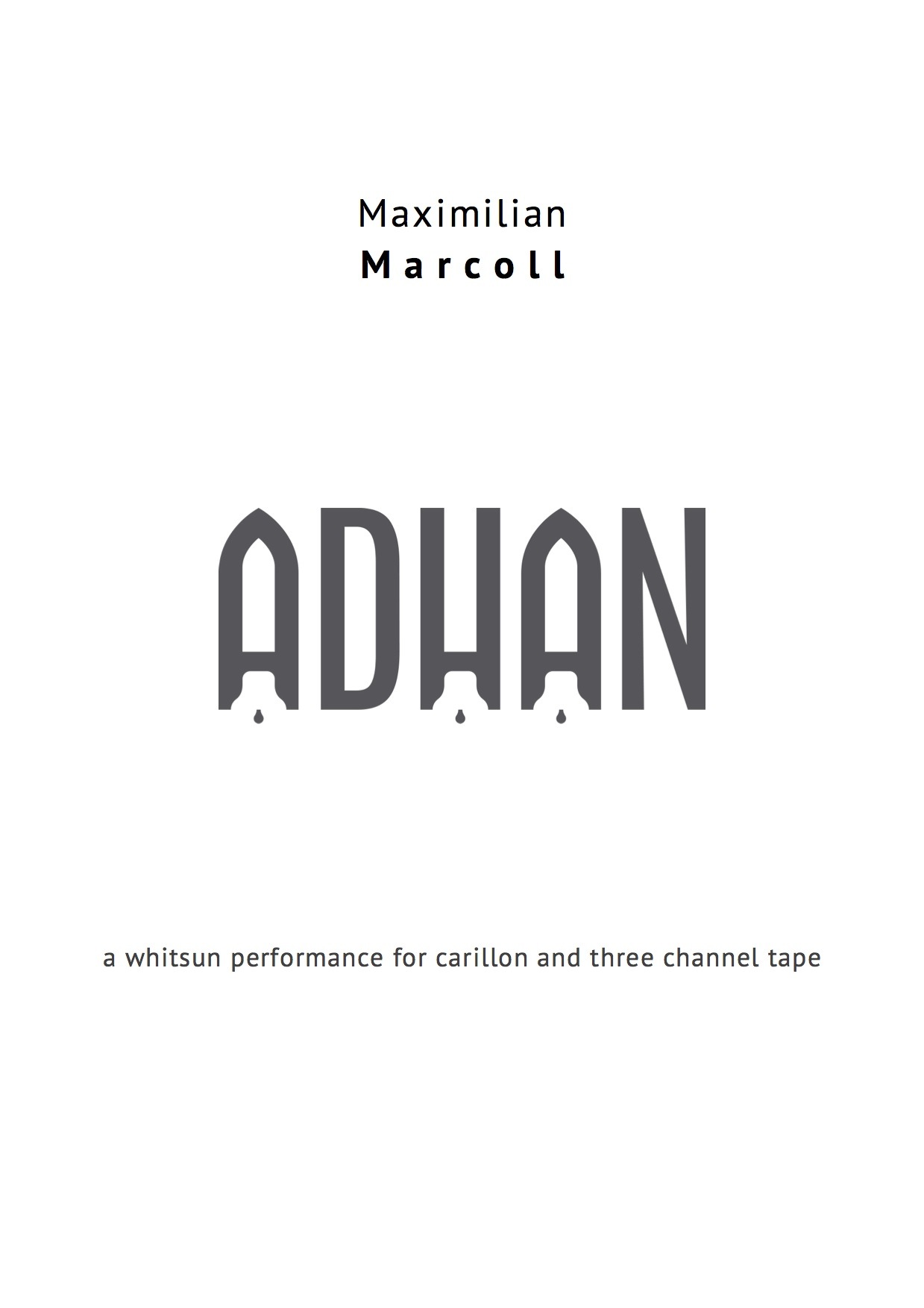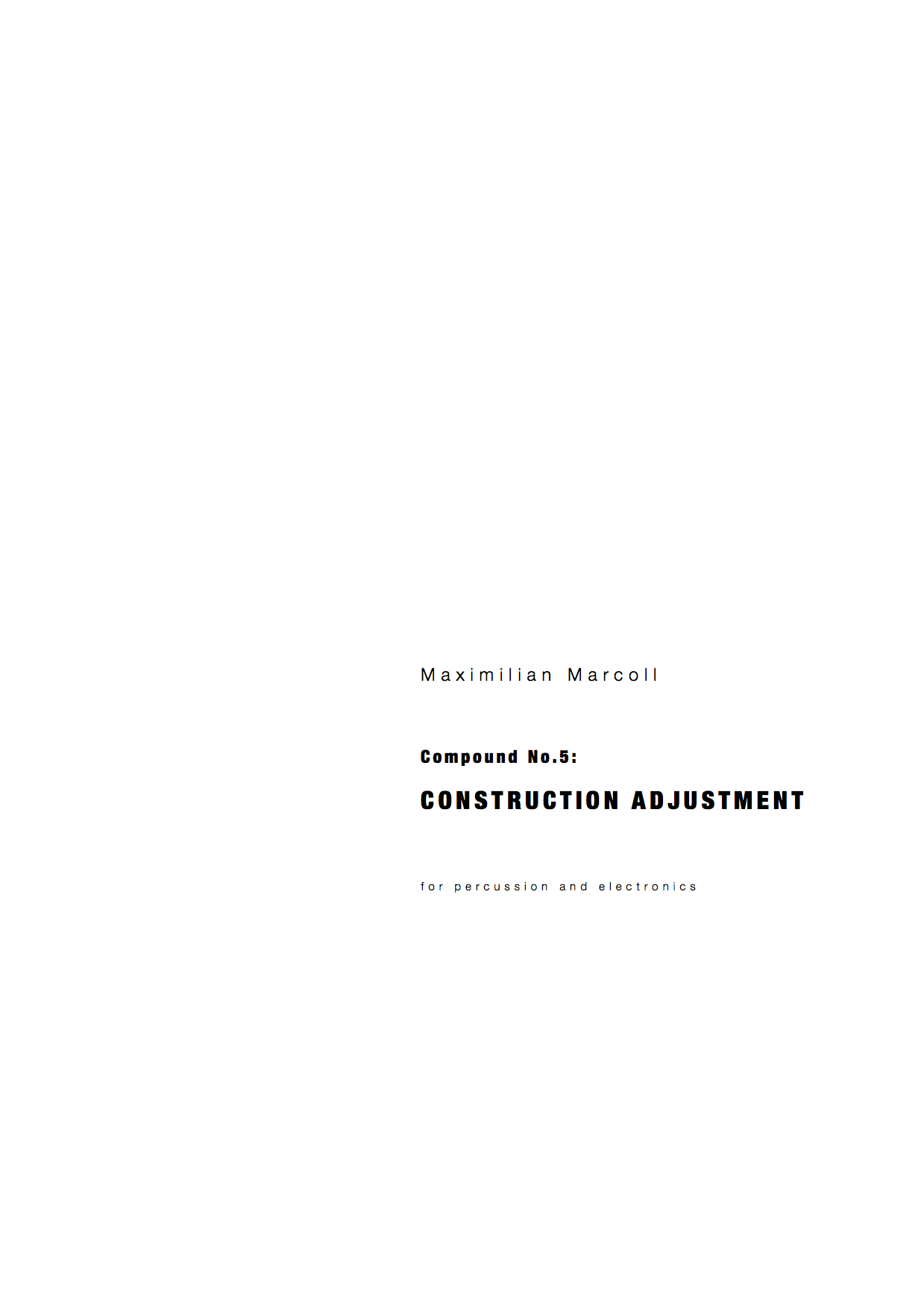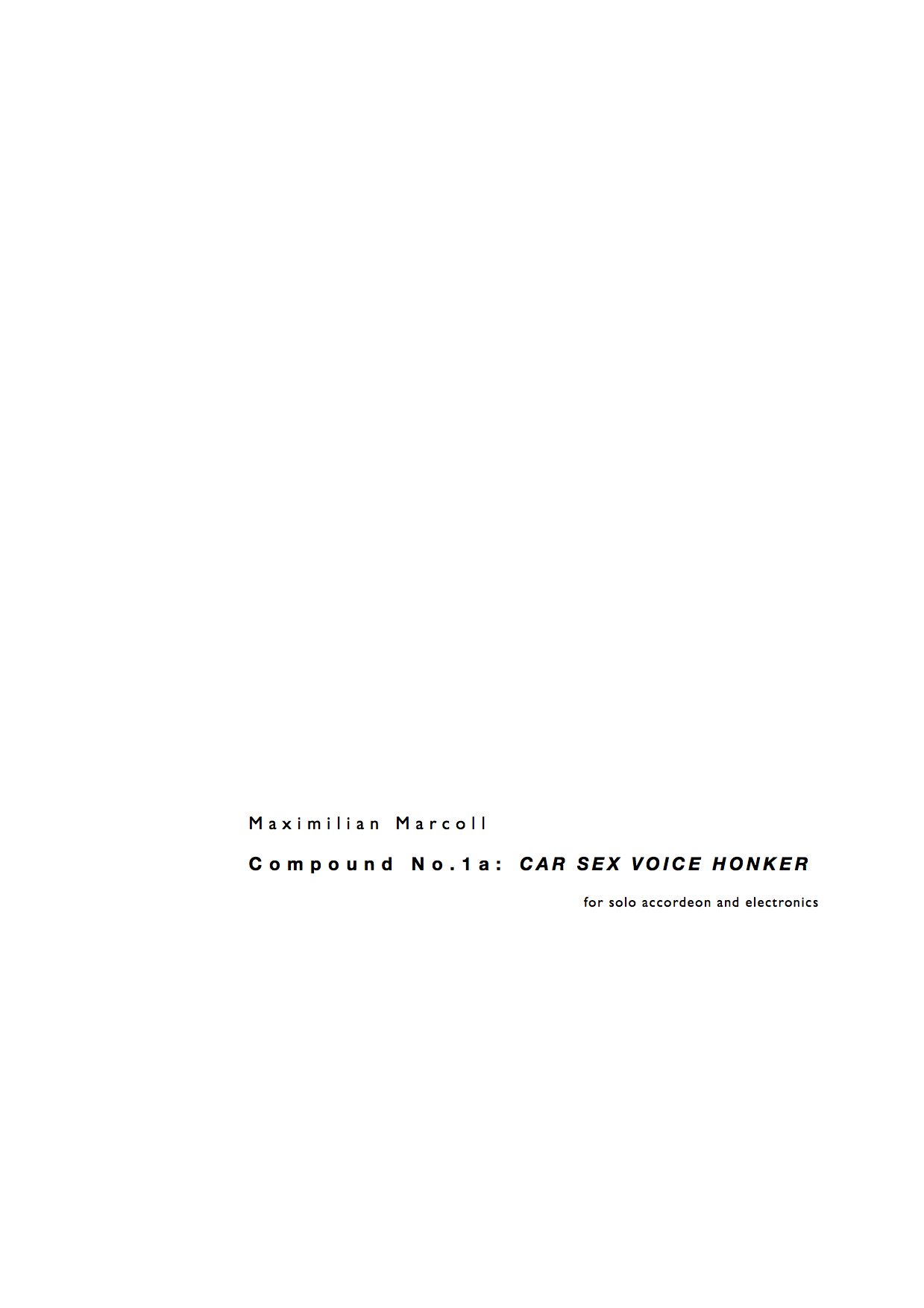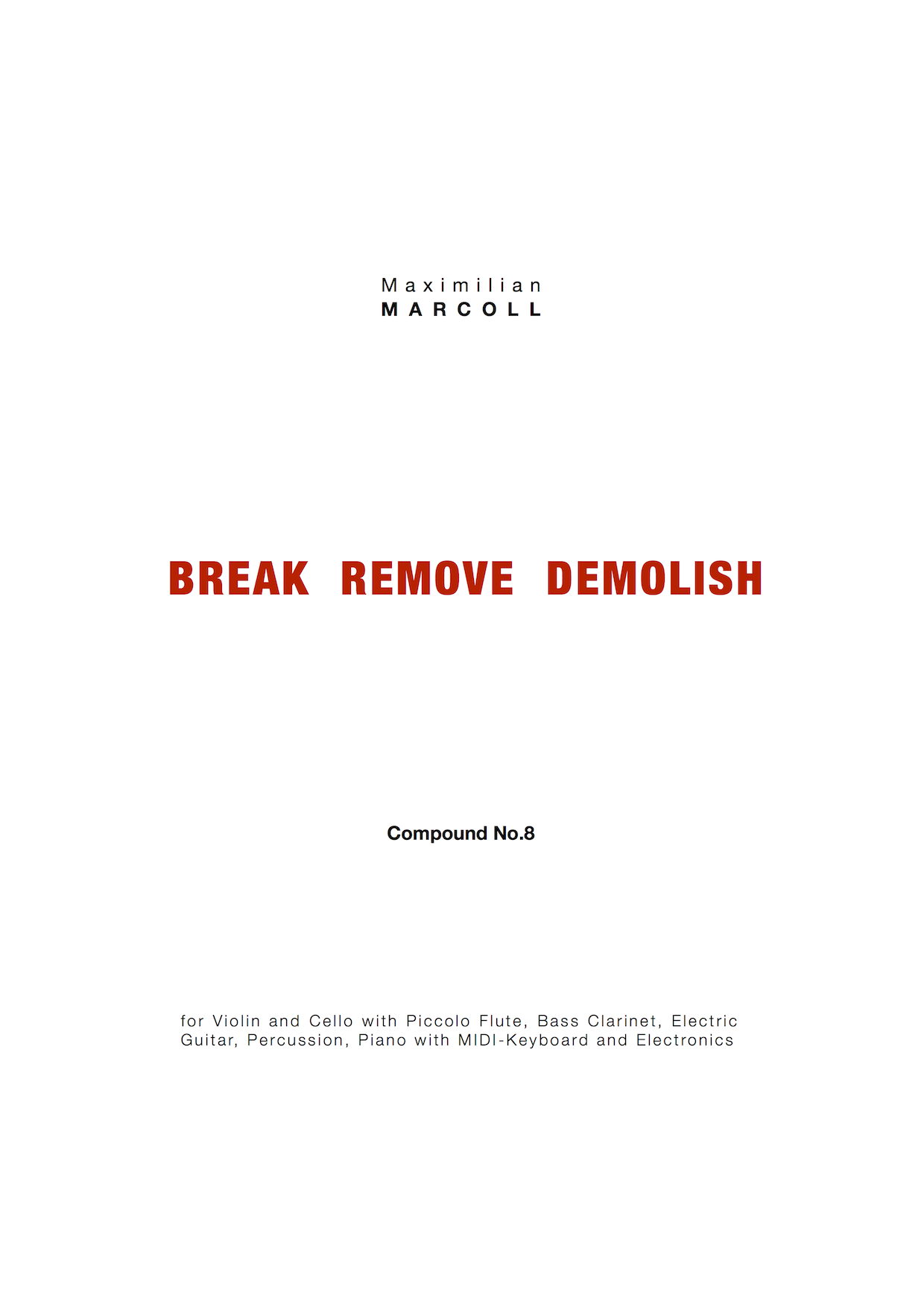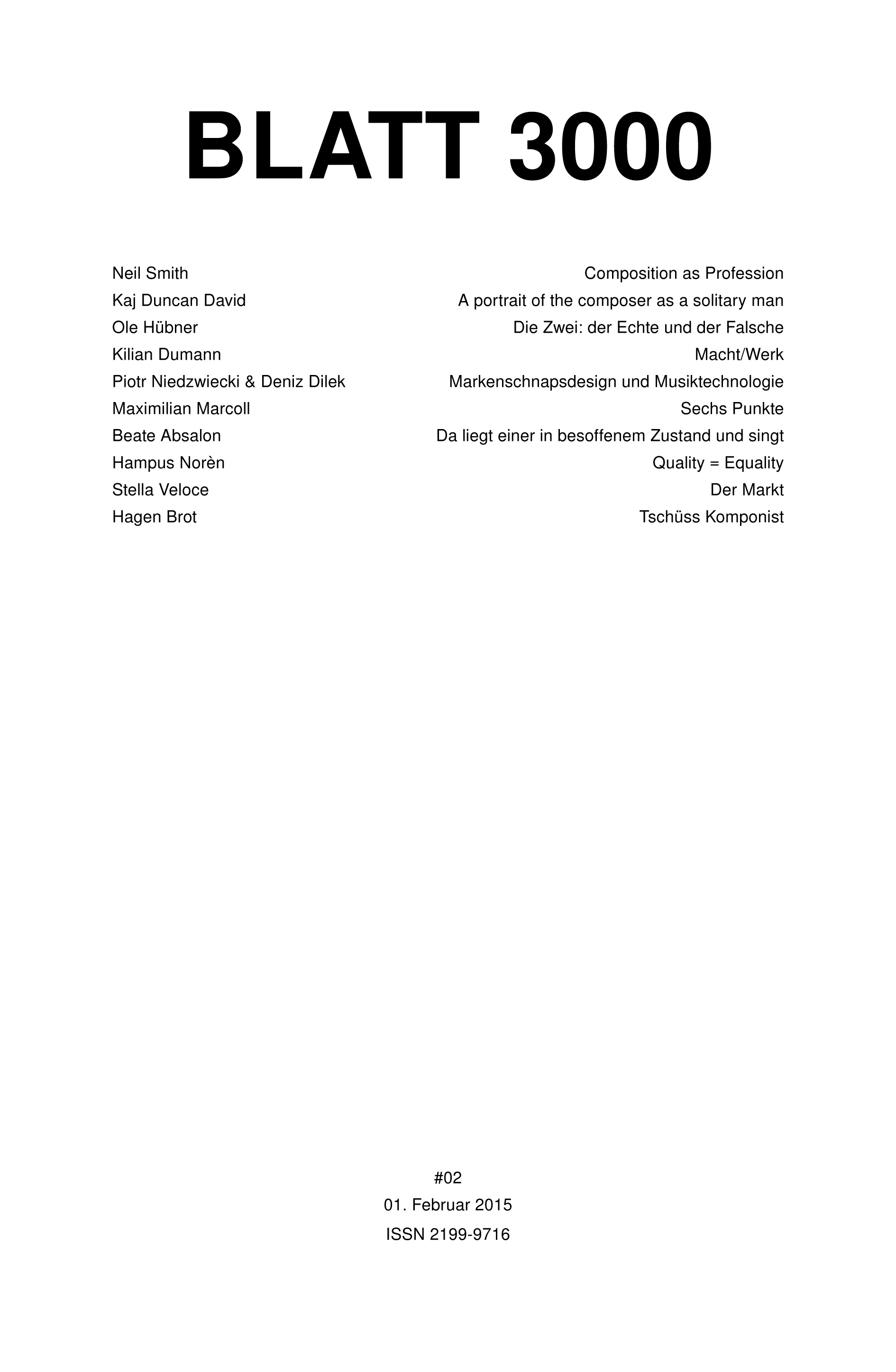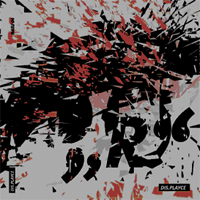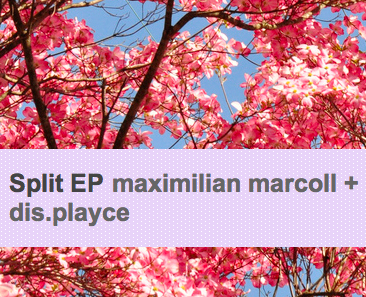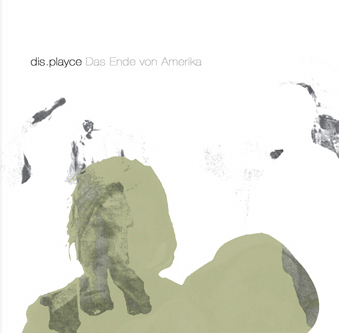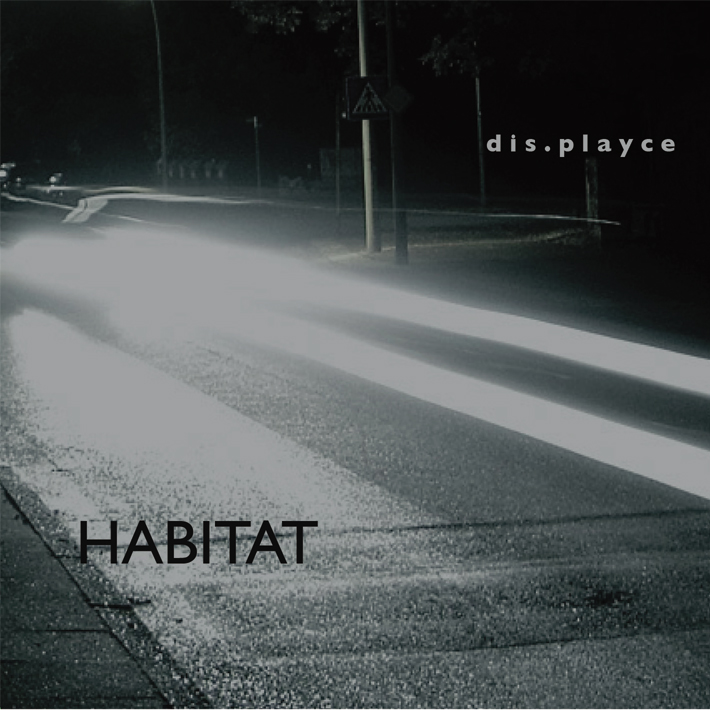Performed Live by Ensemble Lemniscate & Collective Lovemusic Daniel Moreira, cond. Basel, Gare du Nord, April 13th 2022
ARCHIVE
All publications in chronological order:
Published on Saturday, May 21st, 2022
New Recording:
Performed Live by Ensemble Lemniscate & Collective Lovemusic Daniel Moreira, cond. Basel, Gare du Nord, April 13th 2022
Published on Tuesday, May 17th, 2022
Performance Cancelled
The premiere of „Do Electric Sheep Dance To Algorithmic Tunes“ for Big Band and Small Orchestra, scheduled for Wednesday, May 18th in Mainz, had to be cancelled for technical reasons. An alternative date will be announced later.
Published on Tuesday, February 8th, 2022
New Recording:
Studio Version [MM]
Published on Friday, January 1st, 2021
New Recording:
Studio Version [MM]
Published on Monday, November 23rd, 2020
New Release:
DEGEM CD 18
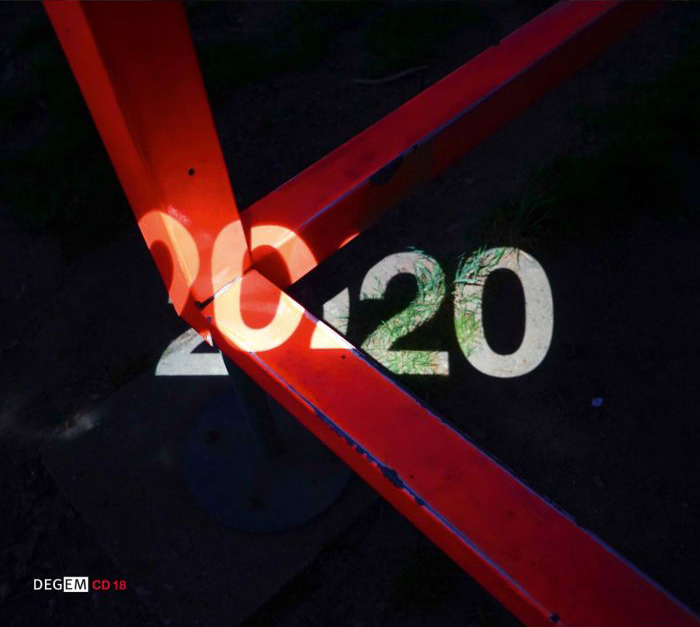
Published on Monday, November 23rd, 2020
New Magazine:
Journal #1

Contains "Don't stand so close to me" (2020)
Published on Thursday, November 12th, 2020
New Interactive Online Version of CONTROL ISSUES
Control Issues is a series of pieces for motorised MIDI controllers.
If you own a suitable MIDI controller you can have “Control Issues” taking over your own hardware directly out of the browser!
Published on Saturday, August 1st, 2020
New Magazine:
Musiktexte #166
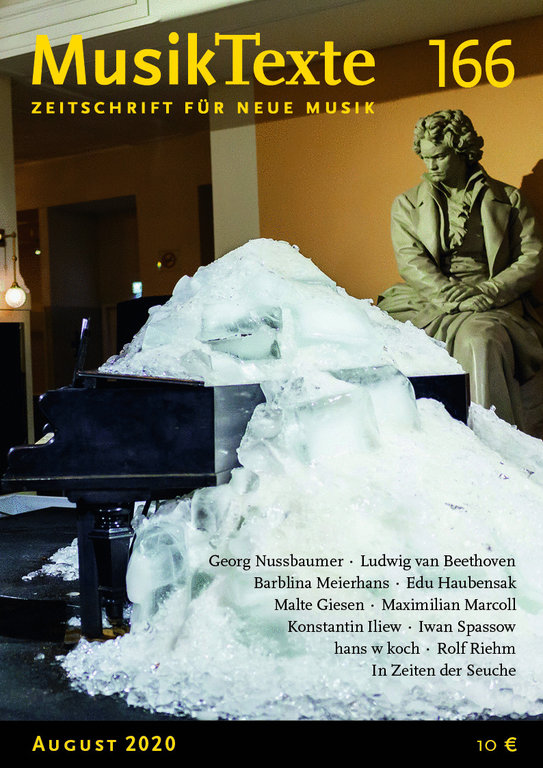
Published on Tuesday, July 28th, 2020
New Recording:
Three excerpts of ACHK, performed live at Acht Brücken, Gewölbe, Cologne, 2019
Published on Friday, May 29th, 2020
New Video:
Published on Tuesday, May 19th, 2020
New Video:
Published on Friday, March 27th, 2020
New Video:
The first performance of the Canone monodico a 4 [Interlock 4], performed by EW-4 at the Neubad in Lucerne on March 12 2020.
Published on Tuesday, March 10th, 2020
New Release:
Goldrausch
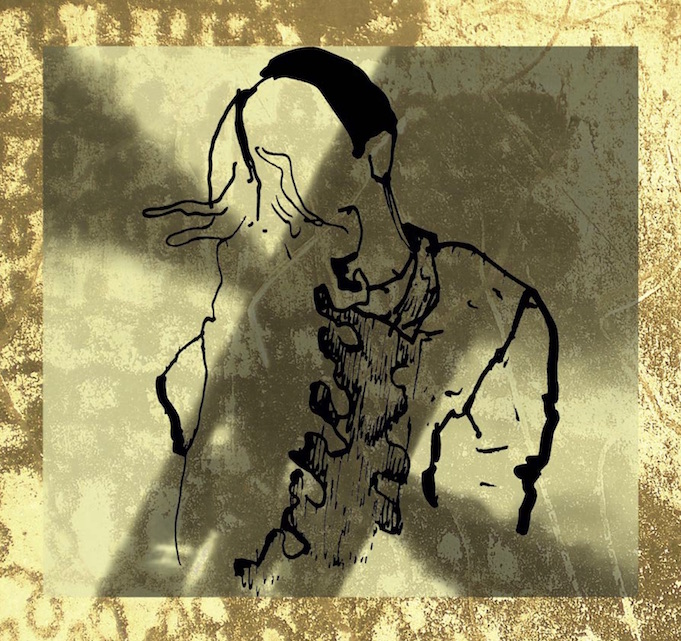
Published on Thursday, November 14th, 2019
New Score:
Published on Sunday, July 21st, 2019
New Video:
Score Follower video with Amproprification #9
Published on Monday, June 10th, 2019
New Recording:
This is not a live performance but a studio simulation that was produced while writing the piece in the ICST studio in Zürich in 2015 – here in a slightly modified mix, done one year later in the studio of the Academy of Arts Berlin. The simulation uses a Sample-Library of the Carillon in Berlin Tiergarten, the instrument on which the piece should have been premiered. The recordings were generously made available by the studio for electroacoustic music of the TU-Berlin for the development of the piece.
Published on Sunday, June 2nd, 2019
New Recording:
Recording of the first performance, Kesselhaus Berlin, May 23rd 2019 Ensemble Mosaik, Enno Poppe, cond. M.Marcoll, sound projection
Published on Saturday, June 1st, 2019
New Score:
Amproprification #9: Schrift/Bild/Schrift, Bernhard Lang
"Amproprifications" is a series of pieces for performers and electronics. The title is a combination of the terms "Appropriation" and "Amplification": In short, all Amproprifications are elaborate amplification layers for preexisting pieces by other composers. The parts of the performers consist in the performance of scores by other composers. One specific score is performed for each piece in the series. Not a single note of the original's text is being altered, nothing is added, nothing is omitted, nothing is being changed in any way. The electronics on the other hand solely consist of amplification. No additional sound whatsoever is being produced. The possibilities of interference span a large variety of movements, from almost inaudibly slow fadings to extremely fast and brutal chopping. In a figure of speech, all Amproprifications are "silent" pieces. They themselves do not contain or produce any sound. They do, however, constitute filters, readings, processings of the original pieces. The development of the amplification layers are very different each time and stem from aspects regarding structure and content that are based in the respective original: The originals are being superimposed with external layers which have their origin in the works itsself.
Amproprification #9 is a tribute to one of my favourite living composers, Bernhard Lang.
In his work he explores both the concepts of looping/repetition and the trans- or recomposing of other composer’s pieces.
“Schrift/Bild/Schrift” is one of the last pieces he wrote before starting to work on the “Difference/Repetition” series, which heavily focusses on loops and repetitions as a means to build musical progressions.
Hence, in Amproprification #9 the amplification layer is comprised mostly of loops and repeating structures that remain fixed or change slowly, while the music underneath has a very different pace of development.
Published on Wednesday, May 1st, 2019
New Video:
Excerpt of the first performance by Annegret Mayer Lindenberg & Burkart Zeller
Published on Wednesday, April 3rd, 2019
Exhibition in Guadalajara, Mexico
The Amproprification exhibition that has been shown in the Goethe Institute in Mexico City last year will move to Guadalajara.
It will be shown in the “Ex-Convento del Carmen” from May 9th until September 9th.
Published on Monday, February 11th, 2019
Amproprification #6 video back online
The Score Follower video for Amproprification #6.1 & #6.2 is back online:
Published on Monday, December 24th, 2018
DeadComposers.net
DeadComposers.net is a web application announcing the last death anniversaries of composers before their works enter the public domain.
On the website you can browse composers’ death anniversaries.
There is a twitter-bot (@dead_composers) announcing the dates as they occur.
And you can subscribe to an ics-formatted calendar to include a comprehensive collection of composers’ death dates right into your digital calendar application.
deadcomposers.net was built in the hope that artists and composers who – like me – work with material by others, will appreciate a way of exploring who’s work can be used freely and when.
Merry Christmas!
Published on Thursday, December 20th, 2018
New Score:
Fremdbestimmt (Studie) [Interlock 2]
Wenn die Augen Fenster zur Seele sind, ist dann die Stimme ihr Megaphon?
Gehorcht sie ihrem Träger nicht, verliert dieser seine soziale Identität, den Verstand, das Leben, wie im Mythos der Nymphe Echo, die mit einer – wie im griechischen Mythos üblich – von ihrem Vergehen abgeleiteten Götter-Strafe (nämlich dem zwanghaften fragmentarischen Wiederholen der von ihr gehörten Sprache) belegt wird. In ihrem äusserlich lebendigen Körper stirbt sie durch den Verlust der Kontrolle über Ihre Stimme bereits innerlich ab, ehe sie von Hirten in Stücke gerissen und auf der ganzen Erde verstreut wird, um bis heute das Gehörte in die Welt zurück zu rufen.
Der Stimmverlust, den Echo erfährt, trifft sie nicht durch zwanghaftes Schweigen, sondern durch Nicht-Schweigen-Können. Sie muss antworten wann immer sie Sprache hört, doch als Person ist sie am Akt des Sprechens unbeteiligt. Ihr Körper spricht ohne sie. Sie hat keine Stimme mehr.
Eine Stimme zu haben bedeutet, schweigen zu können. Die Stimme bleibt auch im Schweigen potentiell mitteilsam.
Eine Stimme zu haben bedeutet auch mitreden zu können, mitentscheiden zu können, ein Teil eines sozialen und politischen Ganzen zu sein, dessen Bedürfnisse von den anderen anerkannt und respektiert werden. Der Verlust dieser Stimme bedeutet Machtlosigkeit und sozialen Identitätsverlust.
Was passiert in einer Situation, in der eine Person nur dadurch spricht, dass sie sich der Stimme eines anderen bedient, in der ihr Sprechen nichts ist als eine durch gelegentliche Konsonanten unterbrochene parasitäre Fremdnutzung eines von Aussen physisch und körperlich in sie eindringenden Klanges? Oder andersherum ausgedrückt: in der die Bedingung der Möglichkeit einer Äusserung zur Machtfrage gerinnt – wer spricht?
Published on Thursday, December 20th, 2018
Ampro8 back online
The recording of Amproprification #8: EROICA about the first movement of Beethoven’s third symphony is now back online, too
Published on Wednesday, December 12th, 2018
Amproprification Recordings
The Amproprification recordings will come back online soon. A new mix of #6.1 & #6.2 (Palestrina) has recently been published on soundcloud and recordings of a few other pieces will follow very soon.
Published on Saturday, October 27th, 2018
New Instagram Acount
Since a few days there is a new Instagram account on which I will collect everything around the Amproprifications. It is only just starting but there is going to be content added step by step:
Published on Thursday, October 25th, 2018
Amproprification Recordings Offline
After some experiments and long consideration I have decided to take offline most audio recordings of the Amproprifications. I understand now that the difference between the live experience and the recordings is so huge that some major aspects of the pieces are lost.
The setting in which musicians perform an acoustic piece of music that is simultaneously being fragmented and modulated into an electroacoustic one has crucial implications that go far beyond spatialisation. It touches the very core of the series, its purpose and concept. Hence, it feels inappropriate to publish versions of the pieces that are purely electronic and fail to simulate the actual scenario. By taking this decision, I may on one hand lose a part of my audience. On the other, I hope that by limiting those pieces to be experienced in concert settings, I might encourage people to come to those events. Although there are going to be exceptions, most of the Amproprifications seem to be a kind of electroacoustic music that only works in its originally intended format: the concert.
MM
Published on Tuesday, October 2nd, 2018
MA/IN 2018
Amproprification #6 (parts one and two) was awarded a Honorary Mention from the Jury of the MA/IN (Matera Intermedia) Festival 2018 in Matera, Italy.
Amproprification #6 on soundcloud
Published on Monday, October 1st, 2018
Amproprifications @ CDMX
The first solo show featuring my Amproprifications is currently running in the Goethe Institut in Mexico City. It will be open until January 9, 2019.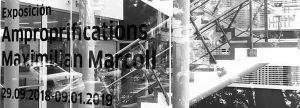
Published on Wednesday, August 22nd, 2018
New Score:
Canone Monodico a 2 [Interlock 3]
Interlock 3 has been written for two performers controlling a single sawtooth wave generator. The two performers simultaneously control the frequency of the same monophonic sound throughout the entire piece.
Both performers play on a fixed range of two octaves. Their impact on the sound, however, is different: While the two octaves of the first performer change the resulting frequency in a range of slightly more than one octave, the second performer controls a range of approximately five octaves, resulting in rather odd scales.
The diminution and augmentation of the range played on by the performers corresponds to the organisation of the musical text that is being performed:
Interlock 3 is a proportional canon. While the first performer plays the text twice, the second performer plays it only once, in half speed.
The text itself is composed of nothing else but augmentations and diminutions (in both time and pitch) along with their inversions and retrogrades, all derived from the opening theme of Stravinsky’s “Le sacre du printemps”.
The overall organisation of those variations is laid out in the form of one long downwards glissando, which corresponds to the waveform used to play the piece, the sawtooth wave.
Interlock 3 is also a “table canon”. Just like the sawtooth waveform, (comprised of all harmonics with their relative amplitudes being their respective inverted [sic!] index), the entire piece is symmetrical: it is its own inverted retrograde.
Published on Tuesday, July 17th, 2018
New Article:
Published on Wednesday, July 4th, 2018
New Recording:
Recording of the first performance, Konzerthaus Berlin, June 24th 2018 Ensemble UnitedBerlin Vladimir Jurowski, cond M. Marcoll, sound projection
Published on Thursday, June 28th, 2018
New Score:
Amproprification #8.1: Allegro con brio, Eroica, C.F.Ebers, L.v.Beethoven
"Amproprifications" is a series of pieces for performers and electronics. The title is a combination of the terms "Appropriation" and "Amplification": In short, all Amproprifications are elaborate amplification layers for preexisting pieces by other composers. The parts of the performers consist in the performance of scores by other composers. One specific score is performed for each piece in the series. Not a single note of the original's text is being altered, nothing is added, nothing is omitted, nothing is being changed in any way. The electronics on the other hand solely consist of amplification. No additional sound whatsoever is being produced. The possibilities of interference span a large variety of movements, from almost inaudibly slow fadings to extremely fast and brutal chopping. In a figure of speech, all Amproprifications are "silent" pieces. They themselves do not contain or produce any sound. They do, however, constitute filters, readings, processings of the original pieces. The development of the amplification layers are very different each time and stem from aspects regarding structure and content that are based in the respective original: The originals are being superimposed with external layers which have their origin in the works itsself. In Amproprification #8, the original is a chamber music version of the the first movement of Beethoven’s third Symphony, arranged by Carl Friedrich Ebers in 1818. Within the Amproprification-layer, two elements are especially important: First, a constant pulse, focusing certain aspects of the original. The first movement of the Eroica is written in a 3/4-metrum, which is quite unusual for a classical symphony. The pulses superimpose additionally odd tempi onto the music, turning the metrum into strange ratios. The second element is a rhythmical structure derived from the first chapters of the draft for a european constitution, which was written exactly 200 years after the Eroica, and which was stopped by referendums in the Netherlands and France in 2004. In general, Beethoven is especially interesting for an Amproprification because his works put up resistance against it, from within. Beethoven never poses as a canvas. Additionally, the Eroica carries a layer of political meaning, with references towards a liberal ideal of Europe. Insisting on the values of a liberal and open Europe is – unfortunately – very important once again. To think ahead and develop new models and visions for Europe based on those ideals maybe even more so.
Published on Tuesday, June 19th, 2018
New Program Note:
Amproprification #8
Program note for Amproprification #8.1: Allegro con brio, Eroica, C. F. Ebers, L. v. Beethoven
(German)
2018
Published on Thursday, May 24th, 2018
New Article:
Published on Sunday, May 13th, 2018
New Magazine:
Musiktexte #157
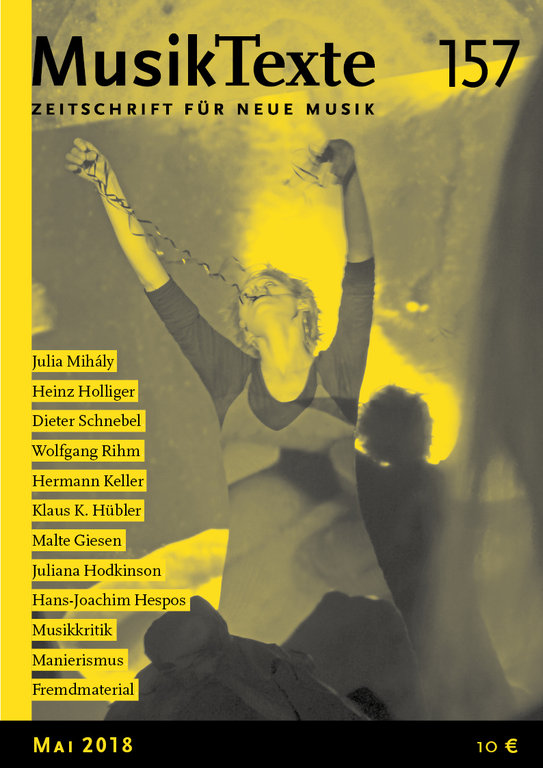
Published on Tuesday, January 9th, 2018
New Video:
Video of the One-Controller Version of Control Issues #1
Published on Wednesday, November 29th, 2017
New Magazine:
Positionen #113
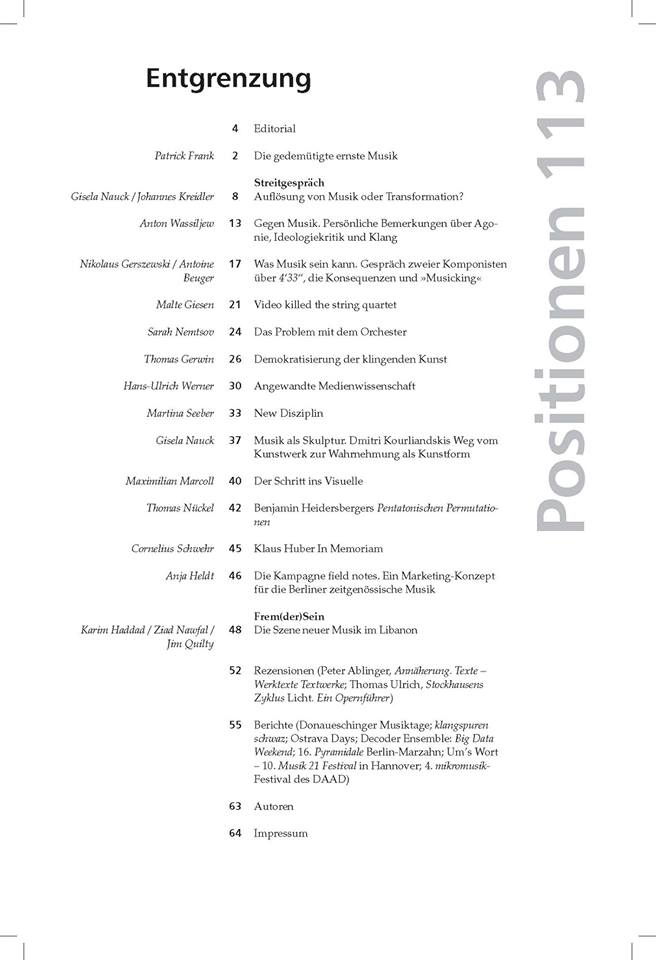
Published on Tuesday, November 14th, 2017
New Recording:
Radio feature by Dirk Wieschollek about the Amproprification series. Broadcasted on SWR2 on October 23rd 2017
Published on Friday, November 10th, 2017
New Video:
Live recording of Amproprification #3 at Unerhörte Musik, BKA, Berlin, 07.11.2017, Mark Lorenz Kysela, Tenor Saxophone – M.Marcoll, Piano
Published on Friday, November 10th, 2017
New Magazine:
Musiktexte #155
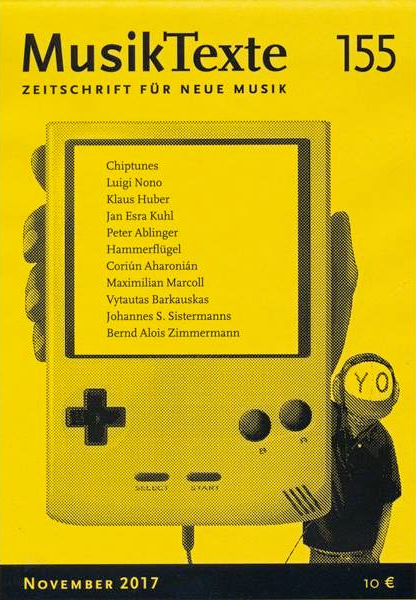
Published on Wednesday, October 25th, 2017
New Recording:
"Über Neue Musik, die auf alter basiert." Radio Feature by Maximilian Marcoll. Broadcasted on DLF Kultur, Oct 24th, 2017
Published on Wednesday, October 11th, 2017
New Magazine:
NZFM 05/17
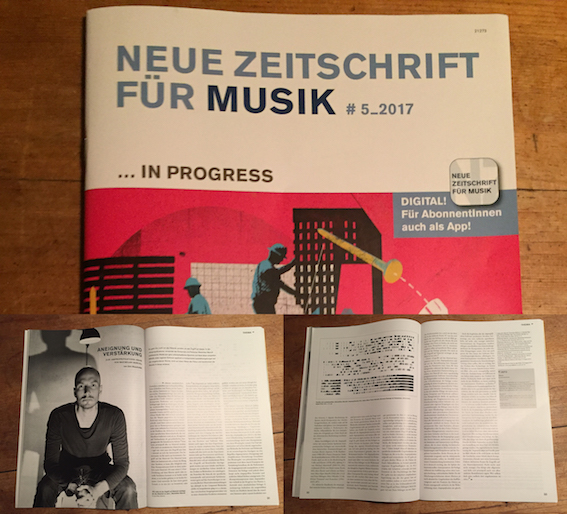
Published on Tuesday, September 12th, 2017
ECHOES
First exhibition showing Amproprification prints, opening in Berlin: From Sept. 13th until Nov 10th, the group show “ECHOES” features four of the Amproprification visuals.
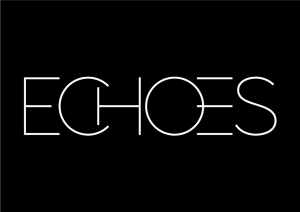
rk – Galerie für zeitgenössische Kunst
Möllendorffstr. 6
10367 Berlin
Published on Monday, August 28th, 2017
Adhan Schöneberg
Nice review of Adhan in the NMZ (in German):
https://www.nmz.de/online/mehr-als-ein-symbol-maximilian-marcolls-adhan-in-berlin
Published on Saturday, June 10th, 2017
New Magazine:
Wenn der Muezzin drei mal ruft

Published on Wednesday, June 7th, 2017
ADHAN – Project Website
The Adhan project website is now public. It provides a detailed project description as well as links to all press releases and other content.
Published on Friday, June 2nd, 2017
New Magazine:
NMZ 6/2017
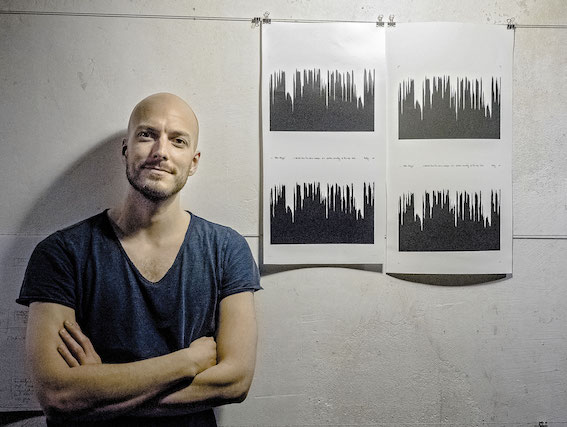
Published on Friday, March 24th, 2017
New Recording:
Performed by Marie Schmit (Vc.) & M. Marcoll (Pno.)
Published on Sunday, March 12th, 2017
New Score:
Amproprification #7: Weiss / Weisslich 17c, Peter Ablinger
“Amproprifications” is a series of pieces for performers and electronics. The electronics consist of automated amplification. No additional sound is being produced. The parts of the performers consist in the performance of scores by other composers. One specific score is performed for each piece in the series. Not a single note of the respective piece's text is being altered, nothing is added, nothing is omitted, nothing is being changed in any way.
The automated amplification layer of "Amproprification #7: Weiss / Weisslich 17c, Peter Ablinger" is derived from the volume envelope of a spoken recording of this very text, lasting exactly forty seconds. You will listen to this text twice:
First, in the form of a digitally analysed volume envelope of the recording, applied to the volume envelope of the snare drum roll that constitutes the first half of Ablinger's piece.
Second, as a manually drawn copy of a graphical print of the recording's volume envelope, translated back into digital sound data. It is applied to the volume envelope of the white noise, constituting the second half of Ablinger's piece.
Published on Sunday, March 12th, 2017
Amproprifications – New Patch
Freshly squeezed: A new MaxMSP-Patch, suitable for all of the Amproprification pieces. The documentation of the patch can be found here.
Published on Wednesday, February 15th, 2017
Preis der deutschen Schallplattenkritik
Preis der deutschen Schallplattenkritik / Bestenliste for the newly published CD by Ensemble LUX:NM containing Drill & Sander.
Published on Wednesday, January 25th, 2017
New Article:
Published on Monday, December 5th, 2016
New Video:
The Score Follower Project published a video with Amproprifications #6.1 & #6.2.
Published on Friday, December 2nd, 2016
New Score:
Amproprification #2: Ombra, Franco Donatoni
Amproprification #2.1 : 8'
Amproprification #2.2 : 5'
"Amproprifications" is a series of pieces for performers and electronics. The title is a combination of the terms "Appropriation" and "Amplification": In short, all "Amproprifications" are elaborate amplification layers for preexisting pieces by other composers.
The parts of the performers consist in the performance of scores by other composers. One specific score is performed for each piece in the series. Not a single note of the original's text is being altered, nothing is added, nothing is omitted, nothing is being changed in any way.
The electronics on the other hand solely consist of amplification. No additional sound whatsoever is being produced. The possibilities of interference span a large variety of movements, from almost inaudibly slow fadings to extremely fast and brutal chopping.
In a figure of speech, all "Amproprifications" are "silent" pieces. They themselves do not contain or produce any sound. They do, however, constitute filters, readings, processings of the original pieces.
Published on Monday, November 28th, 2016
New Recording:
Performed by Thomas Noll
Published on Tuesday, November 22nd, 2016
New Video:
Published on Wednesday, November 9th, 2016
New Recording:
Performed by Norbert Krämer & Michael Pattmann
Published on Monday, November 7th, 2016
New Release:
LUXUS
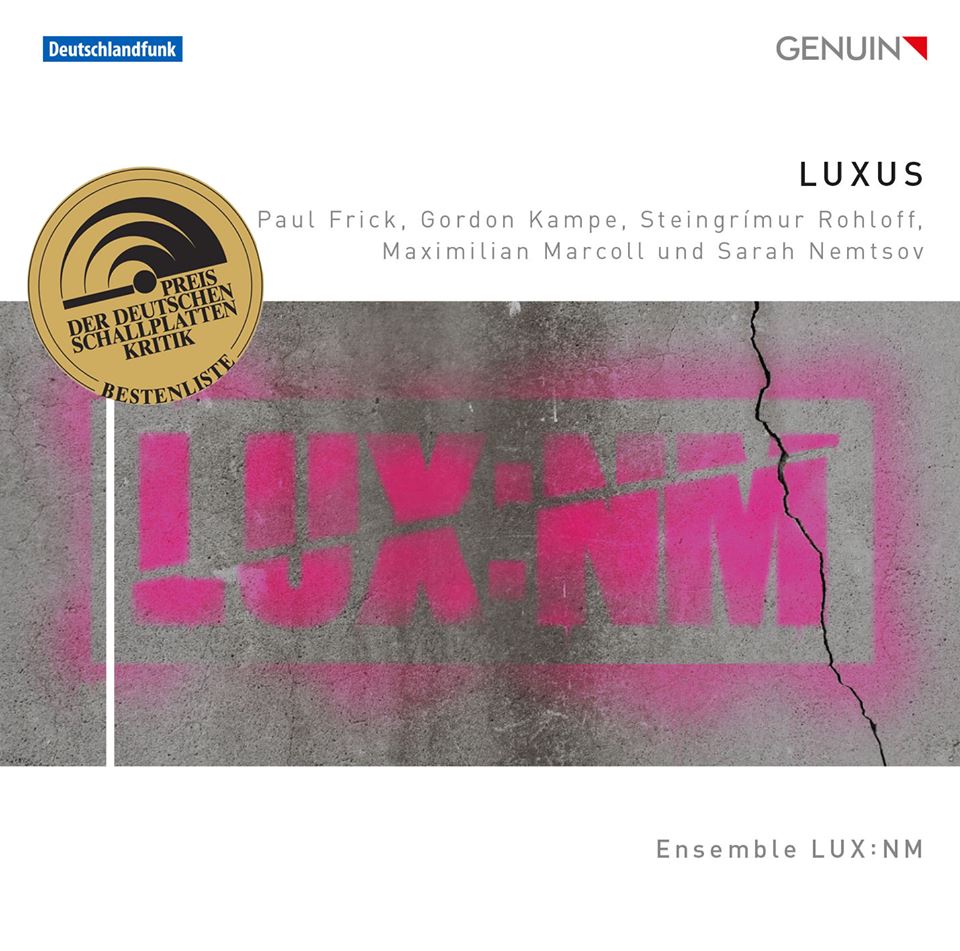
more info
Contains Piece(s):
DrillAndSander
Published on Tuesday, November 1st, 2016
New Recording:
Excerpt of the premier performance, 2011
Published on Tuesday, October 25th, 2016
New Recording:
Published on Friday, October 14th, 2016
New Score:
Amproprification #3: Après un rêve, Gabriel Fauré
"Amproprifications" is a series of pieces for performers and electronics. The title is a combination of the terms "Appropriation" and "Amplification": In short, all "Amproprifications" are elaborate amplification layers for preexisting pieces by other composers.
The parts of the performers consist in the performance of scores by other composers. One specific score is performed for each piece in the series. Not a single note of the original's text is being altered, nothing is added, nothing is omitted, nothing is being changed in any way.
The electronics on the other hand solely consist of amplification. No additional sound whatsoever is being produced. The possibilities of interference span a large variety of movements, from almost inaudibly slow fadings to extremely fast and brutal chopping.
In a figure of speech, all "Amproprifications" are "silent" pieces. They themselves do not contain or produce any sound. They do, however, constitute filters, readings, processings of the original pieces.
Published on Friday, October 14th, 2016
New Score:
Amproprification #6.1: Kyrie, Missa Papae Marcelli, Giovanni Pierluigi da Palestrina
"Amproprifications" is a series of pieces for performers and electronics. The title is a combination of the terms "Appropriation" and "Amplification": In short, all "Amproprifications" are elaborate amplification layers for preexisting pieces by other composers.
The parts of the performers consist in the performance of scores by other composers. One specific score is performed for each piece in the series. Not a single note of the original's text is being altered, nothing is added, nothing is omitted, nothing is being changed in any way.
The electronics on the other hand solely consist of amplification. No additional sound whatsoever is being produced. The possibilities of interference span a large variety of movements, from almost inaudibly slow fadings to extremely fast and brutal chopping.
In a figure of speech, all "Amproprifications" are "silent" pieces. They themselves do not contain or produce any sound. They do, however, constitute filters, readings, processings of the original pieces.
Published on Wednesday, October 12th, 2016
New Recording:
Published on Wednesday, October 5th, 2016
New Book:
Darmstädter Beiträge 23
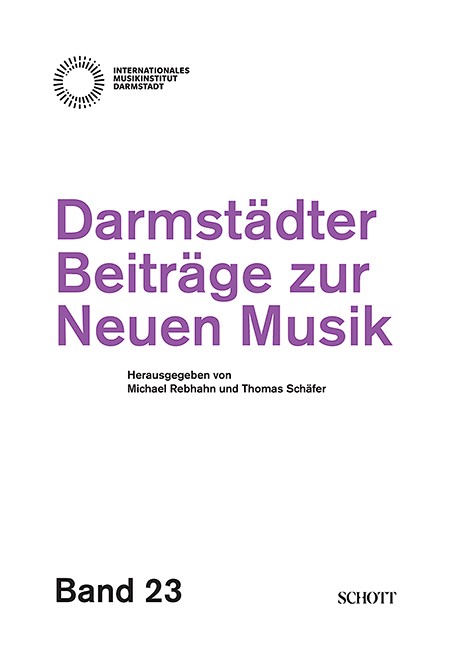
Published on Sunday, October 2nd, 2016
New Recording:
Performed by Heather Roche
Published on Tuesday, June 28th, 2016
New Score:
Compound No.2: AIR PRESSURE TRAIN TV
Ein Regionalzug von innen, stehend, am Frankfurter Hauptbahnhof; Ein ICE-Bordrestaurant während eines verlängerten Zwischenhalts in Dortmund; Eine Techno Party ("Möbel Olfe") im alten Bechsteinhaus am Moritzplatz in Berlin; Eine Passagierin mit elektronischem Beatmungsgerät in einem Zug nach Berlin; Eine pfeifende Dusche in einem Hamburger Hotel; Windräder in Schleswig-Holstein; Durch die Lübecker Altstadt fahrende Autos an Weihnachten 2008; Eine stehende E-Lock; Das Wartezimmer der Abteilung für Strahlentherapie des Lübecker Uni-Klinikums; Ein Ausschnitt aus der TV-Serie "24" (Staffel 6 Episode 11); Der Hinterhof meiner Berliner Wohnung;
Published on Tuesday, June 28th, 2016
New Score:
Amproprification #4: Splitting 8.1, Michael Maierhof
"Amproprifications" is a series of pieces for performers and electronics. The title is a combination of the terms "Appropriation" and "Amplification": In short, all "Amproprifications" are elaborate amplification layers for preexisting pieces by other composers.
The parts of the performers consist in the performance of scores by other composers. One specific score is performed for each piece in the series. Not a single note of the original's text is being altered, nothing is added, nothing is omitted, nothing is being changed in any way.
The electronics on the other hand solely consist of amplification. No additional sound whatsoever is being produced. The possibilities of interference span a large variety of movements, from almost inaudibly slow fadings to extremely fast and brutal chopping.
In a figure of speech, all "Amproprifications" are "silent" pieces. They themselves do not contain or produce any sound. They do, however, constitute filters, readings, processings of the original pieces.
Published on Tuesday, June 28th, 2016
New Score:
Amproprification #1: Sequenza 9c, Luciano Berio
"Amproprifications" is a series of pieces for performers and electronics. The title is a combination of the terms "Appropriation" and "Amplification": In short, all "Amproprifications" are elaborate amplification layers for preexisting pieces by other composers.
The parts of the performers consist in the performance of scores by other composers. One specific score is performed for each piece in the series. Not a single note of the original's text is being altered, nothing is added, nothing is omitted, nothing is being changed in any way.
The electronics on the other hand solely consist of amplification. No additional sound whatsoever is being produced. The possibilities of interference span a large variety of movements, from almost inaudibly slow fadings to extremely fast and brutal chopping.
In a figure of speech, all "Amproprifications" are "silent" pieces. They themselves do not contain or produce any sound. They do, however, constitute filters, readings, processings of the original pieces.
Published on Tuesday, June 28th, 2016
New Score:
Compound No.6: VOICE ALARM AIR MACHINE
Hämmern von Bauarbeitern bei Renovierungsarbeiten an der Aussenfassade meines Wohnhauses; Das Abschleifen des Dielenbodens in der Nachbarwohnung; Ein pfeifender Kellner in einer Kreuzberger Kneipe; Eine Drehorgel in Mexico City; Ein Testalarm in Bludenz (Vorarlberg); Ein schreiender Nachbar im Innenhof vor meinem Küchenfenster; Die Aufnahme einer Probe mit dem Flötisten Erik Drescher;
Published on Tuesday, June 28th, 2016
New Score:
Compound No.4: FRICTION MACHINE ALARM SIGNAL CONSTRUCTION
In Compound No.4 kommen vor: Ein ICE-Bordrestaurant mit piependem Gerät; eine quietschende Rolltreppe am Kölner Hauptbahnhof; Ein Alarmsignal nicht näher bestimmter Herkunft, aufgenommen im Innenhof vor meiner Wohnung in Neukölln; Ein Flugzeug kurz nach der Landung mit knirschendem Kinderwagen auf dem Rolllfeld; Beiläufiges Fingergetrommel einer Freundin; Hämmern von Bauarbeitern bei Renovierungsarbeiten an der Aussenfassade meines Wohnhauses; Wind während einer Zugfahrt mit geöffneten Fenstern;
Published on Tuesday, June 28th, 2016
New Score:
Compound No.1: CAR SEX VOICE HONKER
The materials of Compound No.1a are: single passing cars in Lübeck (Northern Germany) at night; an intersection with an overhead passing train in Berlin Kreuzberg during the day; a car from the inside during a day trip through Northern Germany; heavy breathing during sex; a whining child in my backyard; an excerpt from "Coptic Light" by Morton Feldman; a cafe in Lübeck; a dubstep intro; honking fans of the Turkish National Soccer Team at the Hermannplatz in Berlin; During the course of the piece, the accordions constantly change their identity: The accordeon is lung, is voice, is car horn.
Published on Tuesday, June 28th, 2016
New Score:
Samstag Morgen - Berlin Neukölln. Studie. Und Selbstportrait. Mit Hirsch.
Ausgangspunkt war eine Aufnahme aus dem Innenhof vor meiner Wohnung. Zu hören war ein Dialog von Vögeln mit etwas anderem. Möglicherweise ein anderer Vogel, vielleicht auch irgendein Gerät. Jedenfalls machte es “ziiep”. (Ausgerechnet Vögel!) Allerdings handelt es sich nicht um Vogelgezwitscher im “klassischen” Sinn: Kein Singen, kein Balzen, bloßes vereinzeltes Piepsen. Das Klavier spielt Teile aus Transkriptionen der Vogel-Aufnahmen, die in leichter Bearbeitung zugespielt werden. Eine weitere Schicht, die auch den Anfang des Stückes bildet und über die ganze Dauer nicht abbricht, ist eine (ebenfalls angefasste) Aufnahme des Autors bei der Arbeit an eben diesem Stück. Abgesehen von den konkret objekthaften Ereignissen besteht die Aufnahme aus dem Rauschen des Zimmers und desselben Hofs, diesmal spät abends (Kühlanlage des Imbiß-Restaurants inklusive). Es entsteht eine Situation mit folgenden Komponeten: Konzertraum, Arbeitsraum, Außenraum; Anwesenheit des Autors; Vögel vs. Klavier (als Resynthesemaschine) vs. Klavier (als Klavier); Schliesslich Quantisierungsrauschen und Abstraktion der akustischen Phänomene;
Published on Tuesday, June 28th, 2016
New Score:
The pieces of the "Compound"-Series are based on a collection of transcriptions of recordings of my personal environment. For "OPERATION ENOK" I partly abandonned the technique of precise transcription to achieve a more open relation between the "original" recordings, the tape and the performers. Of course, the tape does dictate a fix temporal structure which the performers have to follow, but almost everything else happens around it, not on top of it. My focus is not so much on an aural scanning of a flow of sound but on a side by side coexistence of several contexts. You will hear: A recording of a neighbour playing a Computer Game; Workers "clearing out" the flat of my neighbour, who had died, car breaks at the freedom square in Tbilisi, Georgia, as well as a collection of recordings of TV Game Shows.
Published on Tuesday, June 28th, 2016
New Score:
1. B o d e n
Seit 2007 bin ich als einer der zugezogenen "jungen Kreativen" für die Gentrifizierung in Berlin-Neukölln mitverantwortlich. Sie umgibt mich, ich lebe in ihr und sie ist fast jeden Tag nicht nur sicht- sondern auch deutlich hörbar. In meinem Alltag, und damit also während des Kompositionsprozesses, bin ich beinahe permament umgeben von Schleifmaschinen, die den neuen Akademikerkindern von nebenan einen schöneren Untergrund zum Barfusslaufen bereiten. Diverse Aufnahmen von jaulenden Maschinen in Nachbarwohnungen legen Zeugnis ab von der Dichte der offenbar dielenfreilegungsbedürftigen Behausungen in meinem Bezirk.
Es nervt kolossal. – Erbarmungslos wie ein Zahnarztbohrer.
2. K o p f
Anfang 2014 wurden mir in einer Marathonoperation zwei Weissheitszähne entfernt. Der Eingriff war nicht nur sehr kompliziert, sondern auch sehr lang.
Ich trug während der gesamten OP kleine (sogenannte Originalkopf-) Mikrofone in den Ohren und habe auf diese Weise ein Dokument erhalten, das "Renovierungsarbeiten" in meinem Kopf festhält, uns allen vermutlich nicht unbekannt. Für mich klanglich-strukturell: die Schleifmaschine von nebenan.
3. N e r v
Der Entstehungsprozess von "Drill & Sander" (Bohrer & Schleifmaschine) nahm seinen Ausgangspunkt an Transkriptionen der beiden beschriebenen Materialien und führte zu einer Beschäftigung mit verschiedenen Formen des "Nervens". Es geht um die Nervensäge, den Störenden, die das Soziale Gefüge störende Instanz, den akustischen Schandfleck in der kleinen bürgerlichen Idylle.
4. G r u p p e
Das Ensemble verhält sich dabei wie ein Netzwerk aus Individuen mit klaren Rollen und Aufgaben, die nur bestimmte Verbindungen zulassen, was zu immer neuen Subgruppierungen führt. Der Solist und die anderen Musiker werden immer wieder neue Koalitionen eingehen: Es gibt zu beinahe jeder Zeit ein Trio, ein Duo, ein Solo, sowie eine_n Schweigende_n. Der Solist ist dabei meistens (aber durchaus nicht immer) die Altposaune.
Published on Monday, June 27th, 2016
New Score:
In the summer of 2014, I was commissioned to write a piece for the Carillon (bell tower) in the Tiergarten in Berlin. Two concerts had been planned for Pentecost Sunday and Monday of 2015, which were to feature not only the piece I had written, but also two older pieces by other composers.
Given the circumstances — namely the bell tower's symbolic association with the church — and the date (Pentecost), addressing the religious context of the event was unavoidable.
The question of openness in central European societies has become increasingly controversial in recent years, and it was against this backdrop that the commission took on even greater potential.
The piece "Adhan" (Arabic for "call to prayer"), consists of an Islamic call to prayer doubled by the bells of the carillon, and a recording of an ancient Jewish wind instrument — the shofar.
The recording of the muezzin was transcribed and arranged for the carillon, the bells of which are synchronized to the vocals. The vocals and the shofar are played back from a loudspeaker positioned at the top of the bell tower. The world's three largest monotheistic religions woven into a single musical gesture: The call of the muezzin, doubled by a Christian bell tower, supported by the Jewish shofar, on a Judeo-Christian holiday.
However, out of fear of islamist-motivated attacks, the piece was removed from the program by the organizer. Public reactions to the removal resulted in the program temporarily returning to its original form before the concerts were finally canceled altogether.
Every instrument has a history: the history of its origins, its development, and of its use. When an instrument is played, its history is inevitably called up in association with the sound it emits.
The history of the carillon is intertwined with that of the church. Although the tradition of the carillon is a secular one, primarily in the Benelux countries, bells bring about an almost automatic association with the tradition of the church and with Christian society. For hundreds of years, the bell tower was — and continues to be — a keeper of time and a distinctive mark of the church, easily recognizable from a distance.
A functional equivalent to the bell tower and the muezzin, found in the Jewish tradition, is the shofar — a wind instrument made out of the horn of a ram. The shofar is traditionally blown to celebrate the new year, and on a handful of other Jewish holidays.
The histories of the instruments used in a piece are not the only layers of meaning expanding into it. The context within which the performance takes place can be equally important. The signifcance of a particular date adds contextual signifcance to a concert, which in turn can have a considerable effect on the piece. A piece of music performed on Christmas, for example, is contextualized differently than one played on the 9th of November (or September 11th).
The Christian celebration of Pentecost takes place around the same time of year as the Jewish feast of Shavuot. Occassionally they actually coincide. Shavuot, in addition to its other signifcances, is celebrated as the day upon which God revealed the Torah. According to the Bible, it is precisely during this celebration that the Holy Spirit descended upon the Apostles and granted them the ability to speak in all the tongues of Jerusalem.
Pentecost is, therefore, a sort of adapted Jewish holiday, representing at once the "birth of the church" and the antithesis of Babel: common understanding between different cultures.
Visit the project website:
adhan.eu
Published on Monday, June 27th, 2016
New Score:
Compound No.5: CONSTRUCTION ADJUSTMENT
The pieces of the Compound series are based on sonic material from my everyday life. The materials are organised into a network structure, which grows continuously, independent of actual pieces. The network consists of recordings, their transcriptions and derivatives which are interconnected by phenomenological similarities. Compound No.5: CONSTRUCTION ADJUSTMENT was written for the Black Box, a custom percussion instrument with an interchangeable surface and some other features. The piece is based on recordings of: My favorite Sushi Restaurant in Berlin Kreuzberg; A shopping mall; Construction Workers in my backyard; The renovation of a friend's appartment; The setting-up of the recording equipment; Wind Clipping in the microphone on a train; Cooling hot plates in my kitchen.
Published on Monday, June 27th, 2016
New Score:
If music be the food of love [Interlock 1]
In the secret prisons of Guantánamo Bay and Abu Ghraib (at least), the U.S. forces applied music as a means of torture. As far as the public knows at this point, the selection of songs used, which is known as the “Torture Playlist” or “GTMO-Playlist”, consists of Pop, Rock and Metal Songs which are well known, accessible and very popular in the western world. While the precise criteria for the selection of particular songs are as yet unknown, there is a rather plausible possibility: the lyrics. Of course, the majority of the prisoners, who don’t speak English, were not able to understand them. Additionally, the playing back of two songs simultaneously (as reported by some sources) might render the lyrics incomprehensible, even for someone with sufficient language skills. For the torturing soldiers, though, the lyrics provide yet another way to further humiliate their victims. Having been used as torture instruments, the songs themselves are imprinted with ambivalency in three ways: The victims do not have access to a way of hearing the songs as popsongs. For them they can only mean pain, suffering, the inability to hear their own thoughts. For us, the popsongs are still popsongs. Our perception might be slightly changed because of our knowledge of their use as weapons, which, then again, lies far beyond our imagination. The torturing soldiers themselves actively change their own relation to the songs in a drastic way. Of course they have not been exposed to the songs in a way similar to their victims, they are however directly involved in the procedure. They must know the songs pretty well, after all, they made the decision to use them. They conciously decided to use something they like, something they identify themselves with on a cultural level, as a weapon against their prisoners. I find it quite hard to imagine that they could later listen to the songs without also hearing the torture instruments. The songs, I think it safe to presume, have been selected because the soldiers think of them as cultural symbols, because they like them, because they listen to them regularly anyway, because they have access to them and because the lyrics open up possibilities for some incredibly cruel and cynical jokes. The songs are imprinted with two opposed ways of perception, that can never be accessed simultaneously. On the contrary, they obscure one another. While listening to them, the songs as weapons and as songs, are always present and absent at the same time, yet always in the directly invers relation. The GTMO-playlist is, as of yet, unverified. Various sources claim however, that certain songs have been used. A selection of those serves as the sole musical material for this piece. Both performers are equipped with two micophones, head- (or ear-) phones and a speaker. For most parts of the piece, each of the performers hears a different song of the GTMO-Playlist on their headphones and, in excerpts, plays along to it, in the rhythm of their respective song’s lyrics. Every single note played by one performer causes the other player’s current song to be audible for the audience, through the respective other player’s loudspeaker. The songs are modulating each other. Both are there, simultaneously, in both saxophone & speaker-combinations, both as the rhythm that modulates the other song and as the “carrier” that is being modulated. Both are simultaneously present and absent: Our perception does not permit us to actively listen to both layers at once. The focus has to change, to switch, back and forth. The respective other relation is permanently inaccessible.
Published on Monday, June 27th, 2016
New Score:
Compound No.3: MACHINE CONSTRUCTION AFTERMATH
MACHINE CONSTRUCTION AFTERMATH ist Teil der Werkreihe "Compounds", die auf einem Netzwerk aus Aufnahmen meiner alltäglichen Umgebung, deren Transkriptionen und Ableitungen basiert. In den Stücken der Reihe kollidieren Klänge deren Ursprung nicht zwangsläufig verwandt ist, die aber auf phänomenlogischer Ebene verknüpft werden können. Die in MACHINE CONSTRUCTION AFTERMATH verwendeten Materialien sind: ein Mähdrescher auf einem Feld in Norddeutschland, Renovierungsarbeiten in der Wohnung meiner Nachbarn in Berlin, ein tropfender Wasserhahn in Köln, Atemgeräusche beim Sex, eine auskühlende Herdplatte, eine Boing 747 während eines Transkontinentalfluges, Staubsaugende Nachbarn, die Klimaanlage einer Berliner Bar, ein U-Bahn-Lüftungsschacht in Mailand, eine Kettensäge.
Published on Monday, June 27th, 2016
New Score:
Compound No.1a: CAR SEX VOICE HONKER
The materials of Compound No.1a are: single passing cars in Lübeck (Northern Germany) at night; an intersection with an overhead passing train in Berlin Kreuzberg during the day; a car from the inside during a day trip through Northern Germany; heavy breathing during sex; a whining child in my backyard; an excerpt from "Coptic Light" by Morton Feldman; a cafe in Lübeck; a dubstep intro; honking fans of the Turkish National Soccer Team at the Hermannplatz in Berlin; During the course of the piece, the accordeon constantly changes its identity: The accordeon is lung, is voice, is car horn.
Published on Monday, June 27th, 2016
New Score:
In the Summer of 2013, the case Snowden/NSA revealed that a rather old dystopian nightmare had already come true. A large number of publications have since given us shocking information on how powerful the secret monitoring programs really are. The individual citizen seems to be quite powerless against those attacks on our freedom. It is my belief that art has a responsibility to react. "PERSONAL DATA" is a two minute piece in which the performers, following a simple structure, proclaim their personal data. Adresses, login data to email and other accounts, bank details etc are given away. Although, the simultaneity of the disclosures renders the individual data sets incomprehensible.
Published on Saturday, April 2nd, 2016
New Recording:
"Über Appropriation in der Neuen Musik." Radio Feature by Maximilian Marcoll. Broadcast on DeutschlandRadio Kultur, March 22th, 2016
Published on Thursday, July 23rd, 2015
New Article:
Published on Thursday, July 23rd, 2015
New Article:
Published on Thursday, July 23rd, 2015
New Video:
Published on Wednesday, June 24th, 2015
New Article:
Published on Saturday, May 23rd, 2015
New Magazine:
Uraufführung abgesagt

Published on Thursday, January 1st, 2015
New Video:
Video produced by M.Marcoll, 2014
Published on Saturday, November 29th, 2014
New Article:
Published on Saturday, November 29th, 2014
New Magazine:
Blatt3000 #1
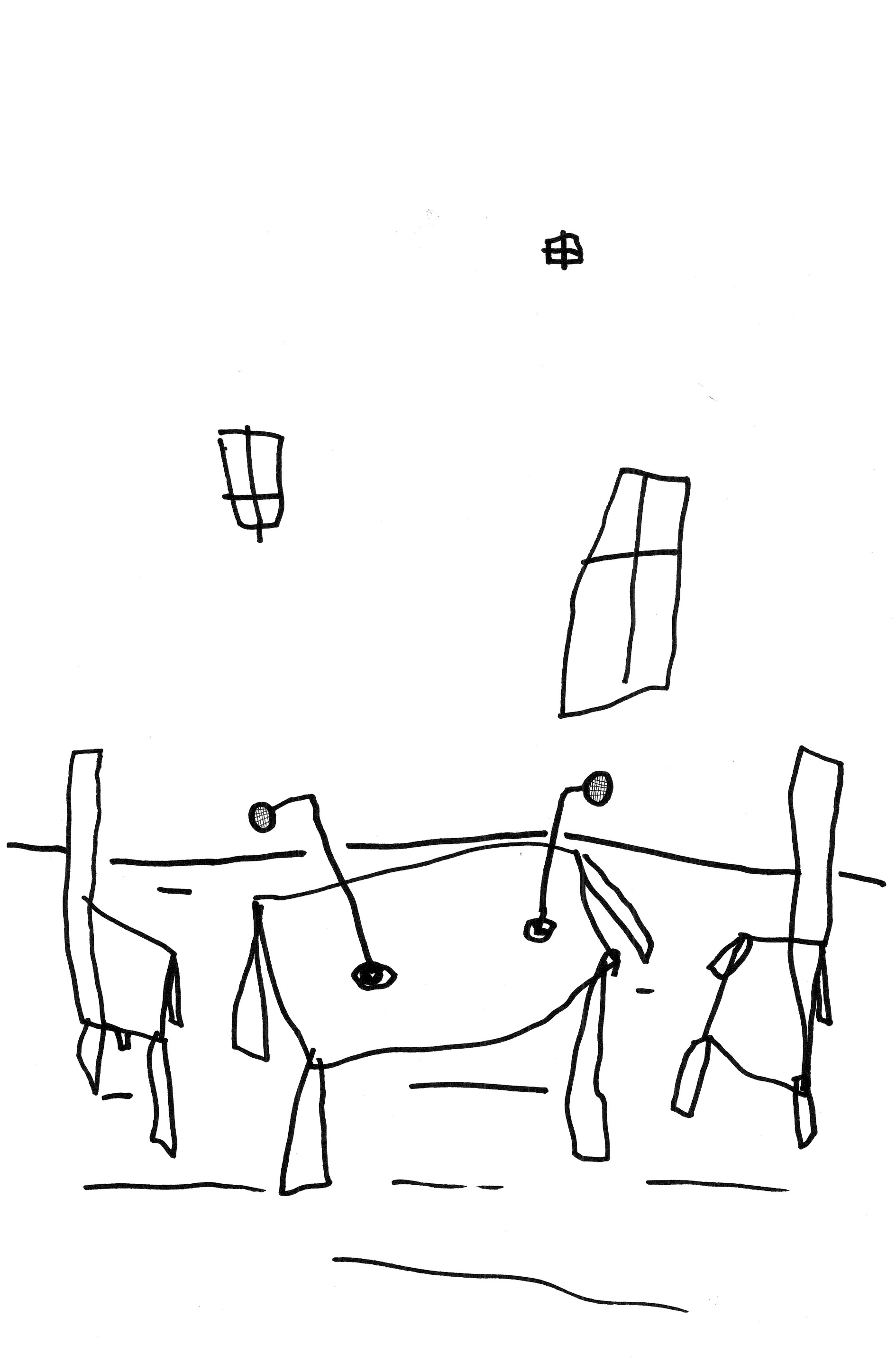
Published on Friday, November 7th, 2014
New Program Note:
Published on Tuesday, August 26th, 2014
New Recording:
Nadar Ensemble playing "BREAK REMOVE DEMOLISH"
Published on Thursday, August 14th, 2014
New Article:
Published on Wednesday, August 13th, 2014
New Recording:
Lecture in Darmstadt, 12.08.2014
Published on Sunday, August 10th, 2014
New Video:
Live @ GAM | Santiago de Chile
Concert of the International Composers Meeting 2014
Students of Composition
Universidad Catholica
Published on Sunday, August 10th, 2014
New Book:
Umverteilung
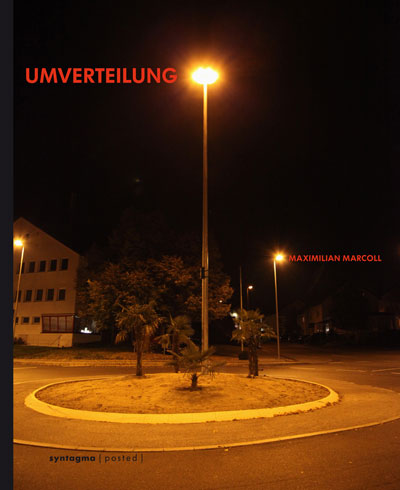
Published on Thursday, April 24th, 2014
New Video:
Published on Tuesday, March 25th, 2014
New Recording:
"Über privates, intimes, und nicht öffentliches in der Neuen Musik." Radio Feature by Maximilian Marcoll. Broadcasted on DeutschlandRadio Kultur, March 25th, 2014
Published on Wednesday, February 12th, 2014
New Recording:
Radio Feature by Jakob Bauer
Published on Thursday, November 28th, 2013
New Article:
Published on Thursday, September 12th, 2013
New Program Note:
Samstag Morgen
Program Note for "Samstag Morgen - Berlin Neukölln. Studie. Und Selbstportrait. Mit Hirsch."
2007
Published on Thursday, September 12th, 2013
New Program Note:
Published on Thursday, September 12th, 2013
New Program Note:
Published on Thursday, September 12th, 2013
New Program Note:
Published on Thursday, September 12th, 2013
New Program Note:
Published on Thursday, September 12th, 2013
New Program Note:
Compound No.3: MACHINE CONSTRUCTION AFTERMATH
Program Note for Compound No.3: MACHINE CONSTRUCTION AFTERMATH
2011
Published on Thursday, September 12th, 2013
New Program Note:
Published on Thursday, September 12th, 2013
New Recording:
Audio Trailer for Compound No.3: MACHINE CONSTRUCTION AFTERMATH
Published on Tuesday, September 10th, 2013
New Article:
Published on Sunday, September 8th, 2013
New Recording:
Studio Version, performed by stock11
EXCELLENT SOUND QUALITY
Published on Sunday, September 8th, 2013
New Recording:
Marcoll & Ensemble United Berlin, 2012
POOR SOUND QUALITY
Published on Sunday, September 8th, 2013
New Recording:
Eva Zöllner live in Cologne (Part 2)
Published on Sunday, September 8th, 2013
New Recording:
Eva Zöllner live in Cologne (Part 1)
Published on Sunday, September 8th, 2013
New Recording:
Sebastian Berweck @ Piano+ 2011, wide shot
Published on Sunday, September 8th, 2013
New Recording:
Sebastian Berweck @ Piano+ 2011, close up
Published on Saturday, September 7th, 2013
New Recording:
Radio Feature on the Compound series by Michael Rebhahn. Broadcasted on Apr 17th, 2013 on WDR3.
Published on Friday, September 6th, 2013
New Article:
Roman Pfeifer: Narrative Netzwerke
An analytical Text about the Percussion Sextett, by Roman Pfeifer. Published in Seiltanz #2.
2012
Published on Friday, September 6th, 2013
New Magazine:
Positionen #84
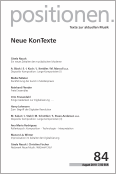
Published on Thursday, September 5th, 2013
New Release:
CrossCut

Published on Thursday, September 5th, 2013
New Magazine:
Positionen #93
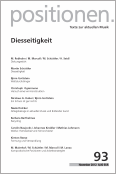
Published on Thursday, September 5th, 2013
New Article:
Published on Thursday, September 5th, 2013
New Article:
Transkription und Handwerk
On the consequences of working with transcription (German) Published in Positionen #84
2010
Published on Thursday, September 5th, 2013
New Article:
Published on Thursday, September 5th, 2013
New Article:
Published on Thursday, September 5th, 2013
New Article:
Published on Thursday, September 5th, 2013
New Article:
Weitervermittelt
An Interview with artist Ian W.Coel and Cartograph Karl Ortmann by Hannes Seidl and Maximilian Marcoll (in German)
2012
Published on Thursday, September 5th, 2013
New Magazine:
Positionen #92
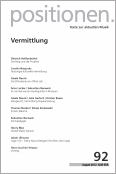
Published on Thursday, September 5th, 2013
New Article:
Raumgreifen
A text about the work of the electronics duo dis.playce, by M.Marcoll & Hannes Seidl. Published in Positionen #92
2012
Published on Thursday, September 5th, 2013
New Article:
Published on Thursday, September 5th, 2013
New Article:
Published on Thursday, September 5th, 2013
New Release:
stock11: 2
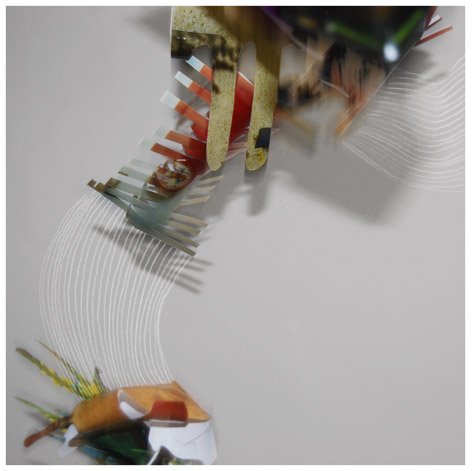
Published on Wednesday, September 4th, 2013
New Program Note:
Published on Thursday, August 22nd, 2013
New Book:
Ways Ahead
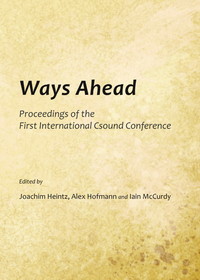
Published on Thursday, July 18th, 2013
New Magazine:
Seiltanz #2

Published on Wednesday, July 17th, 2013
New Magazine:
MusikTexte #137
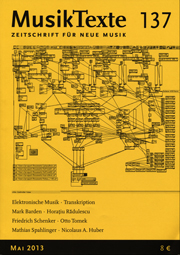
Published on Wednesday, July 17th, 2013
New Release:
stock11: 3
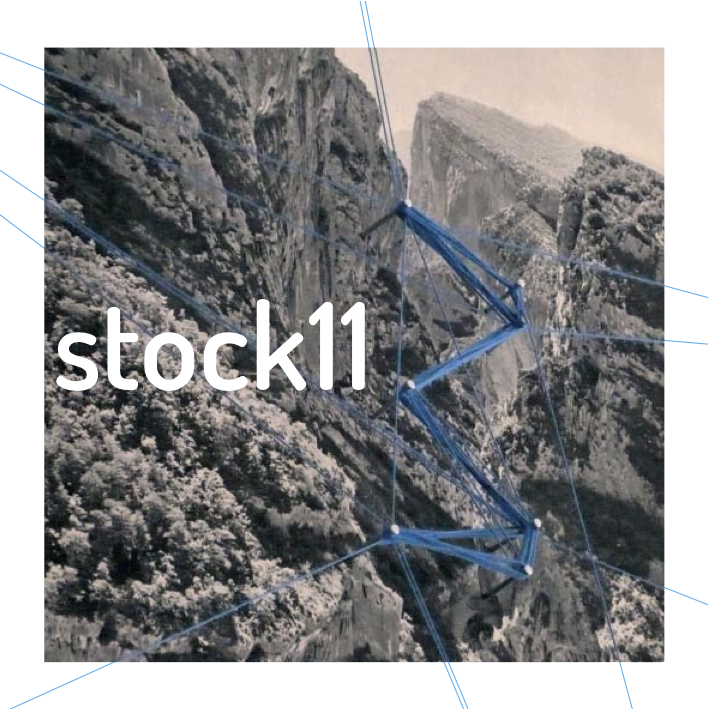
Published on Wednesday, July 17th, 2013
New Video:
performed by Maximilian Marcoll, live @ Ultraschall 2011, Sophiensäle, Berlin
Published on Wednesday, July 10th, 2013
New Article:
Compounds – Dezentrales Komponieren
A description of the Compounds working model (in German). Published in Positionen #93
2012
Published on Wednesday, July 10th, 2013


